
Maldives by Diving Squad - What to Expect, Regions, Seasons & more
If you want to know more about diving the Maldives, you’re in the right place!
On this page, we’ll regale you with our own first hand experiences of diving the Maldives, accompanied by original movies and photos.
Located roughly 370 miles off India’s southwest coast, the Maldives is a tiny island nation comprised of a long chain of 1,190 coral islands, grouped into 26 atolls that stretch 511 miles from north to south.
Because the Indian Monsoon sweeps along this island chain, the tropical water’s around them are bombarded with rich nutrients. The result is a thriving marine ecosystem!
Maldivian waters are teaming with manta rays, stingrays, sharks, dolphins, turtles and vast schools of pelagic fish such as tuna, giant barracuda, trevally and jackfish to name a few.
The underwater landscape is both dramatic and varied, consisting of towering pinnacles, thilas, caves and walls adorned with colourful coral and surrounded by reef fish, nudibranch, shrimp and octopus.
Many divers consider the Maldives to be the best place in the world to see manta rays; they’re a common sight and almost guaranteed to be spotted throughout a Maldives liveaboard trip.
It’s also an incredible place for shark action; with hundreds of schooling grey reef sharks as well as hammerhead, tiger, bull, thresher, whitetip reef, blacktip reef and whale sharks.
However, with nearly 1200 islands bearing complicated names, five distinct regions and dozens of local liveaboards and dive resorts, planning a dive trip in the Maldives can be totally confusing!
Fortunately it no longer has to be. Simply read this guide, created from our own experiences of diving the Maldives and learn everything you need to know before going. We’ll cover:
CONTENTS:
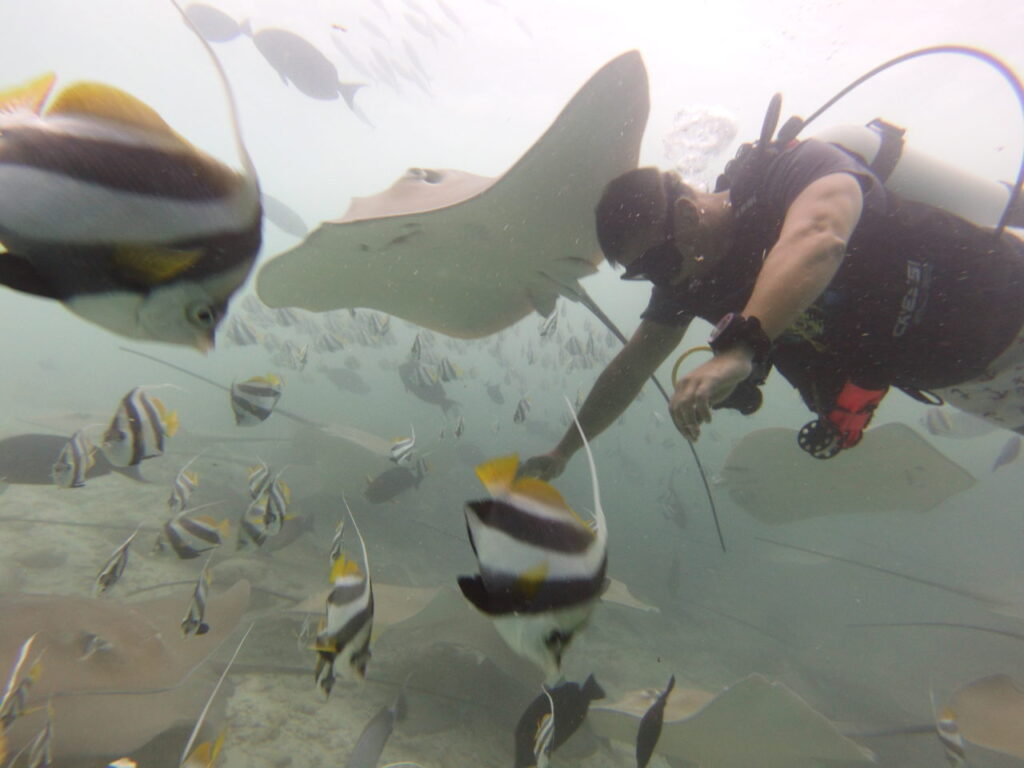
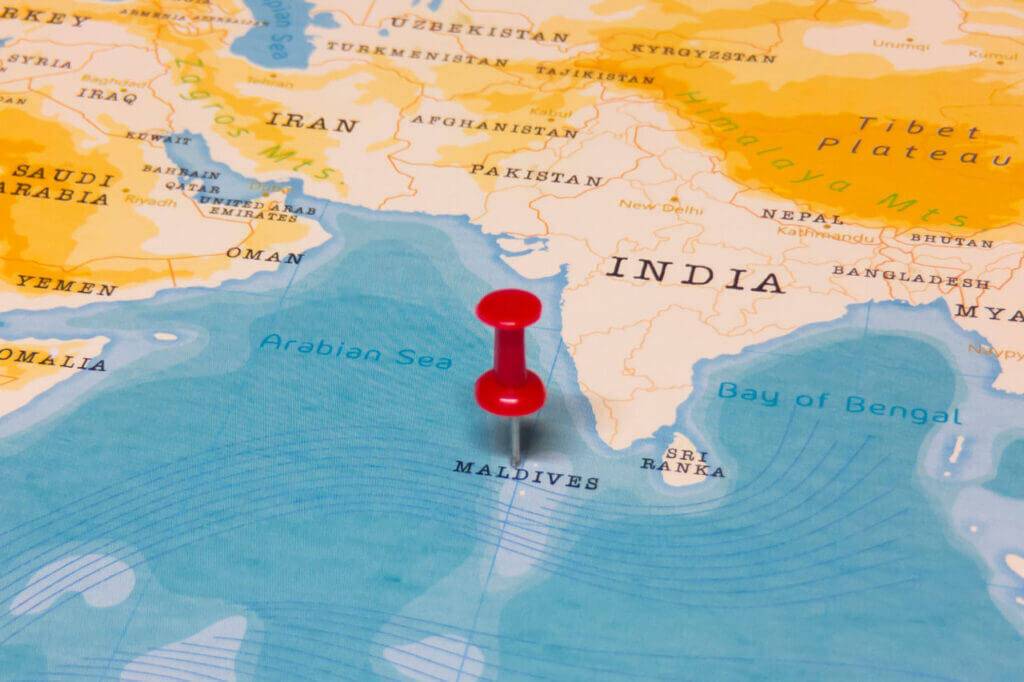
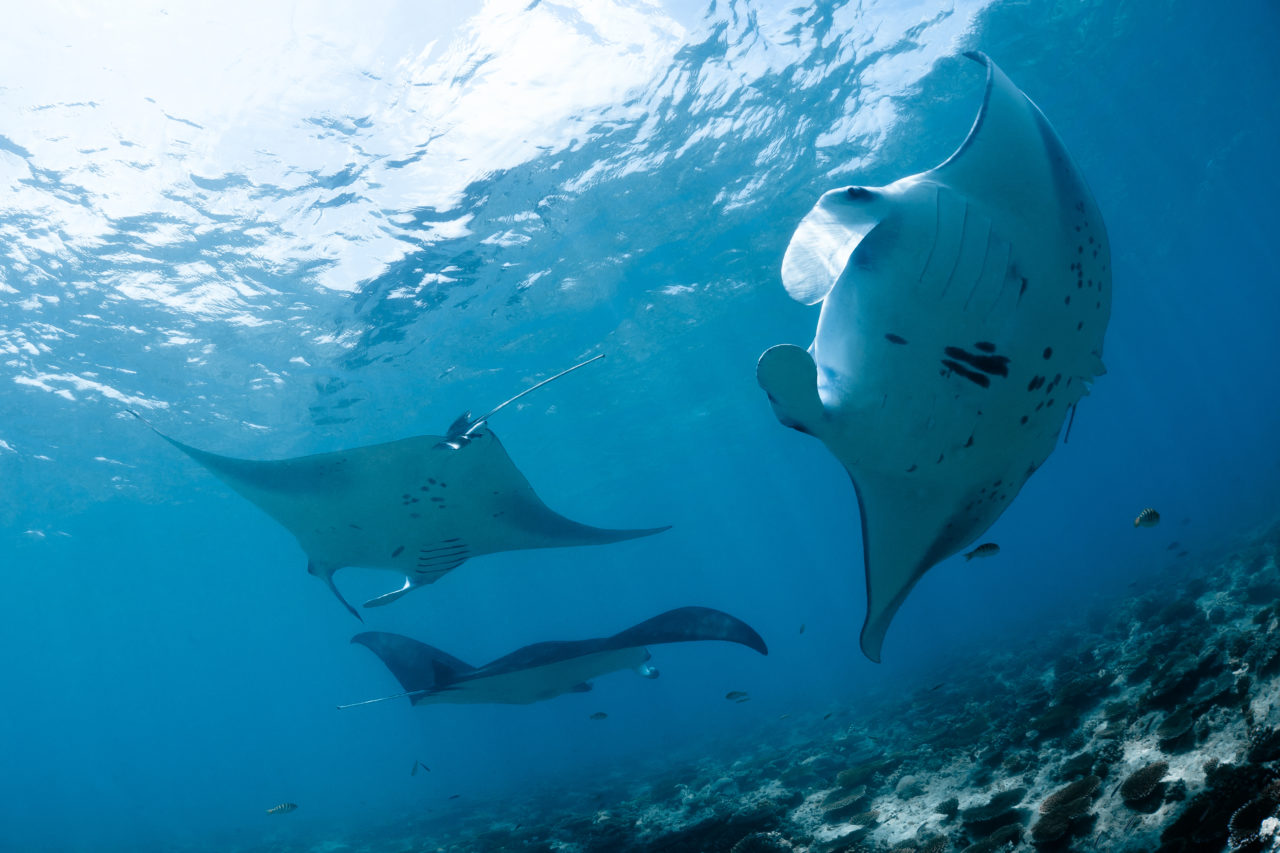
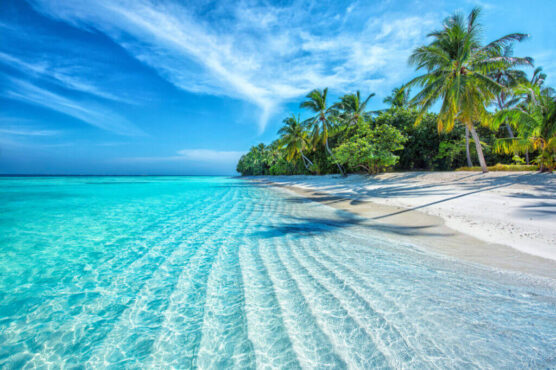
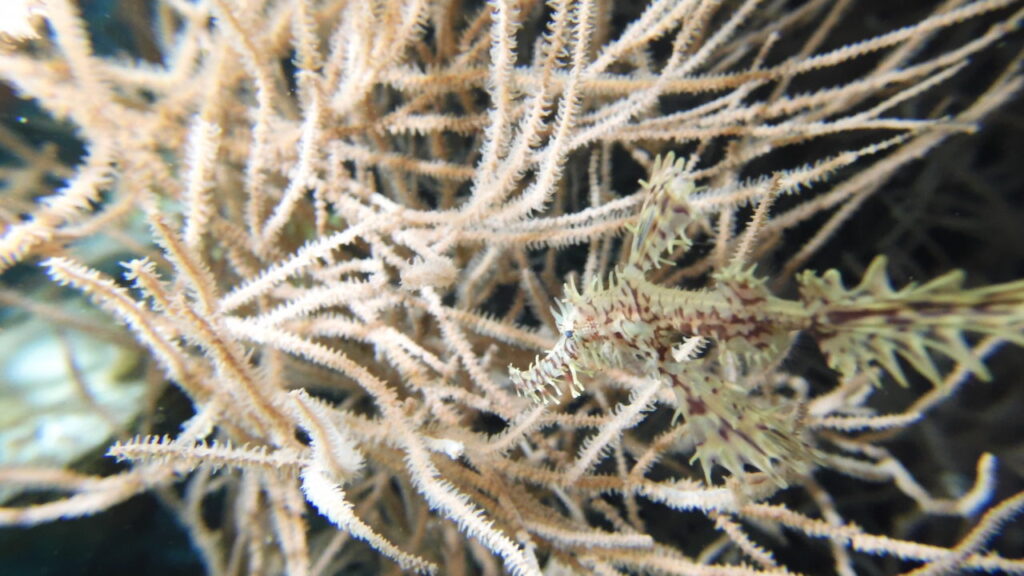
5 Reasons you'll love diving the Maldives:
#1 Manta Rays
“The footage in the video above was captured when I witnessed four reef mantas at a cleaning station. They seemed immensely curious by us divers and hung around for a good fifteen minutes, circling ever closer to us and performing somersaults and various backflips.
Consider that manta rays have the largest brain to body ratio of any fish, can recognise themselves in the mirror and have distinct personalities and it’s not so hard to imagine that they were performing some of these acrobatics for us!
These immensely intelligent and gentle beings are one of the highlights of any trip in the Maldives. During my week long trip with the Soleil 2 liveaboard, I was lucky to see individual mantas on four separate occasions and this group of four at a well known manta cleaning station. We also saw a pair on a night dive”!
Alex
One of the main reasons I went to the Maldives was to fulfil my dream of diving with manta rays which I’ve had ever since I first started scuba diving in 2011. That dream came true! During my liveaboard trip with Iruvai, we saw these incredible gentle giants on several occasions – such as the selfie in the photo above as well as on a night dive!
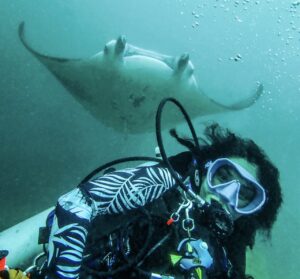
Laura Dellauri
Scubaholic, marine biologist and high-ranking Diving Squad Scout.
#2 Shark Action
“It’s not just manta rays that the Maldives is famous for among scuba divers. There is also an absolute f**k-ton of sharks in those waters!! In the movie above we see a school of hundreds of grey reef sharks which again, is a pretty common sight you can see when diving on a liveaboard which will take you to special dive sites where this is known to frequently occur.
It’s a truly incredible experience to see so many of these 6 – 8 foot long sharks swimming past and will take your breath away. The best bit – they are found in such high numbers, all year round!
In addition to grey reef sharks, there’s many other species of shark that you can also see in the Maldvies. During my liveaboard experience with Soleil 2, I also saw many nurse sharks, whitetip reef sharks as well as a tiger shark and a bull shark! Some members of my group also saw a whale shark whilst snorkelling!
It’s also possible to spot thresher, leopard, blacktip reef and hammerhead sharks”!
Alex
“During my Maldives liveaboard trip with Iruavai, I got to see many grey reef sharks plus quite a few whitetip reef, blacktip reef and nurse sharks as well as three tiger sharks”!

Laura Dellauri
Scubaholic, marine biologist and high-ranking Diving Squad Scout.
#3 Feeding Frenzies!
“Some liveaboards in the Maldives operate a unique experience known as a feeding frenzy! It’s where staff bring down tuna heads and other discarded fish waste from human food to attract hundreds of stingrays as well as many fish.
This is actually a great way of returning food energy to the marine ecosystem after fishing from it and making sure nothing goes to waste.
During my liveabaord trip around the Central Maldives there were two feeding frenzies – the first was on day one and attracted many stingrays and guitar sharks (technically a ray also) as well as a tiger shark! The second feeding frenzy (shown in the footage above: bought in countless stingrays, schooling bannerfish , unicorn fish and blue trigger fish – it was insane”!
Alex
#4 Unique Night Dives
“Oh I’m sure you’ve been on night dives before! But have you been on night dives whilst surrounded by dozens of nurse sharks swimming within less than a foot of you? How about with pairs of manta rays? These are actually pretty common occurrences when going on a night dive with a liveabaord in the Maldives”!
Alex
#5 Tons of Variety
^ The above movie was made aboard Soleil 2 – which in our opinions, is one of the very Best Maldives liveaboards.
“There’s just so much to see in the Maldives – from mighty pelagics like manta rays, sharks, turtles and dolphins to incredible stretches of healthy that is home to all manner of reef fish, nudibranch, octopus, mantis shrimp and lobsters!
The islands are beautiful, the people are incredible and the diving is out of this world”!
Alex
Missions in the Maldives by Diving Squad
“Diving in the Maldives can be divided into four main types of dives: channels, reefs, lowlands (thilas & rock pinnacles) and cleaning stations (manta points).
Channels – spaces between two islands, are great for seeing pelagic fish and sharks.
Reefs and lowlands can present just about anything but they’re normally awesome for smaller and medium critters like reef fish, octopus, nudibranch, reef sharks, turtles and moray eels.
And cleaning stations are where you can see multiple manta rays together!
I explored the Maldives with the Iruvai in January and we toured the Central Region – which many consider to be one of the best diving areas in the world, famous for its abundance of marine life.
Diving the four central atolls (North Male, South Male, Vaavu and Ari) divers can see mantas, grey sharks, whitetip reef sharks, blacktips reef sharks, nurse, leopard, whale shark, turtles, eagles, napoleons, tuna and turtles.
During my trip I saw all of these, except leopard and whale sharks – but I did see tiger three sharks! I also spotted morays, nudibranch, shrimps, blowfish, leafish and all manner of coral and reef fish.
All dives around Vaavu featured strong currents – because of this, I recommend taking a reef hook to conserve energy and air. Miyaru Kandu is a channel normally described as an easy dive but I found challenging due to a strong current that was present. However, it was an amazing dive point to see grey reef and whitetip reef sharks!
My favourite area to dive was Ari atoll which offered an incredible variety of dives (reefs, thilas, wrecks, and cleaning stations).
I especially enjoyed Moofushi kando where I fulfilled my dream of diving with mantas – it was an unforgettable experience!
The last day, we dived the “Shark Tank” dive spot. There we were able to see three tiger sharks and we were also surrounded by thousands of spinner sharks and rays. It was an incredible note to finish diving the Maldives on”.
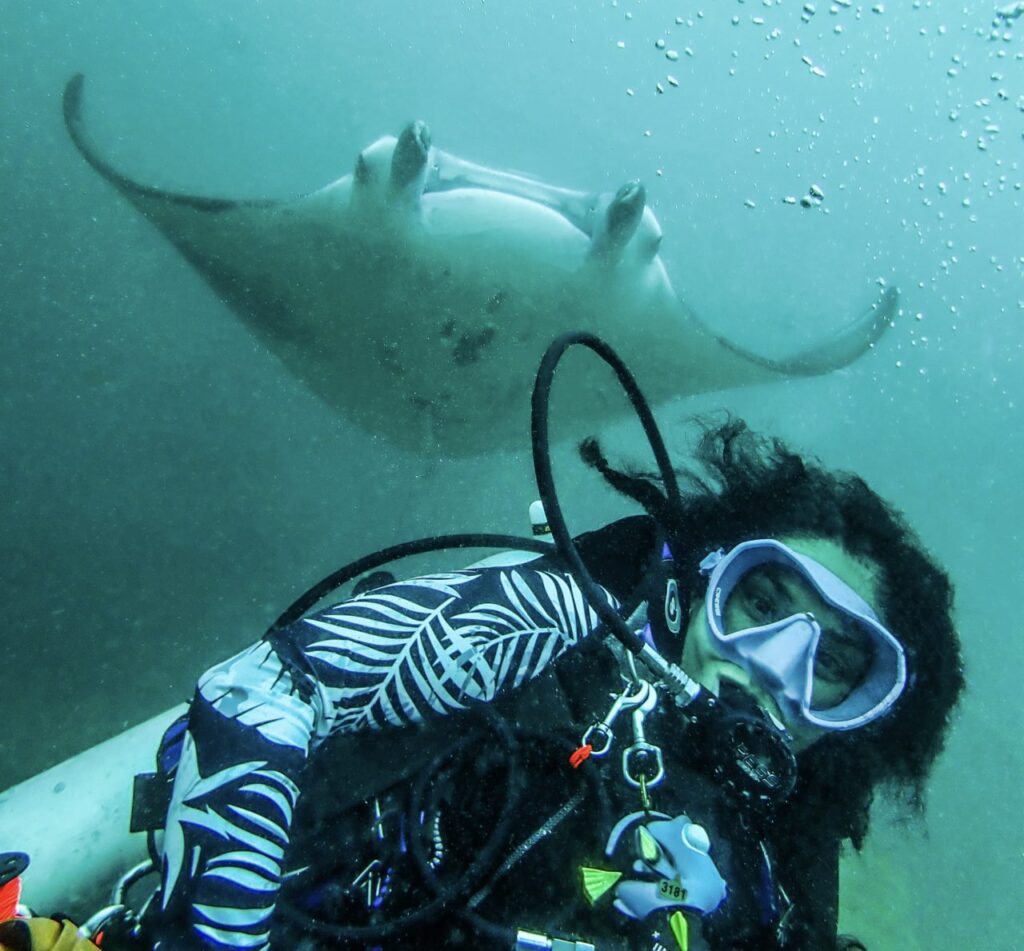
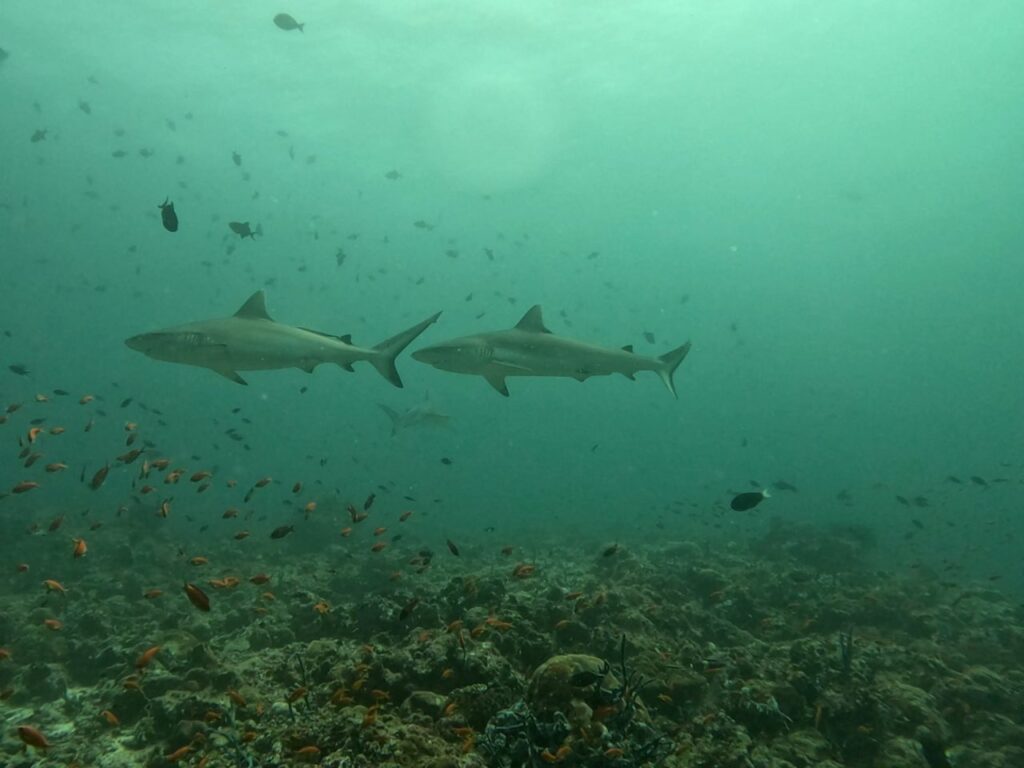
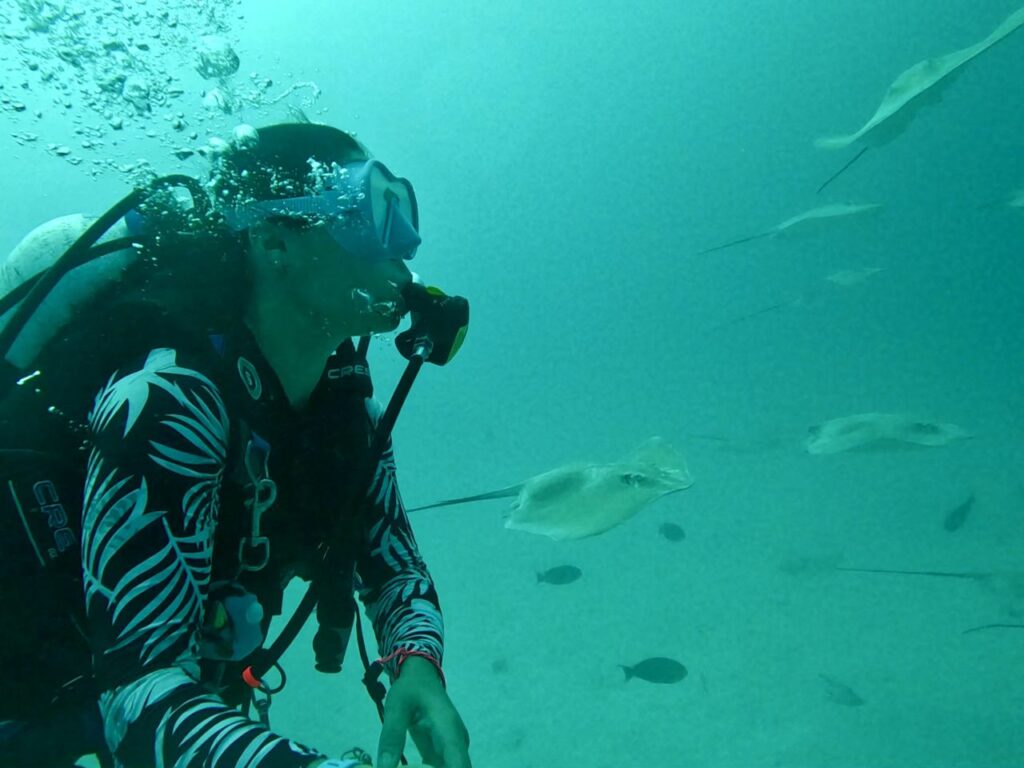

Laura Dellauri
Scubaholic, marine biologist and high-ranking Diving Squad Scout.
“I had an absolute f**king blast in the Maldives!
In just one week of exploring the Central Region with Soleil 2, I saw more sharks and rays than I have in the previous 10 years I’ve been diving.
Nothing could have prepared me for how incredibly abundant big marine life is here. There were also numerous dolphins, turtles and countless pelagic fish like giant barracuda, trevally and tuna. Dayum!
I was also pleasantly surprised by the reef which was extremely healthy in areas and host to an incredible variety of reef fish, nudibranch, morays, crustaceans, corals and sponges.
At times, the visibility left something to be desired – I was there in mid-December which is when the season is changing into the northeast monsoon period.
It’s important to remember that poor visibility can occur anywhere in the world at any part of the year though though. Ultimately, it didn’t really detract from the experience. I’ve heard from other people that at the right time of year Maldives visibility can be great.
Currents were almost existent at the vast majority of dive sites that we visited. However, as we can see with Laura’s experience this can also change as some of the same dive sites she visited had stronger currents when she was there, so it’s good to be comfortable with drift dives for Maldives diving.
I loved diving the Maldives and will definitely be going back”!
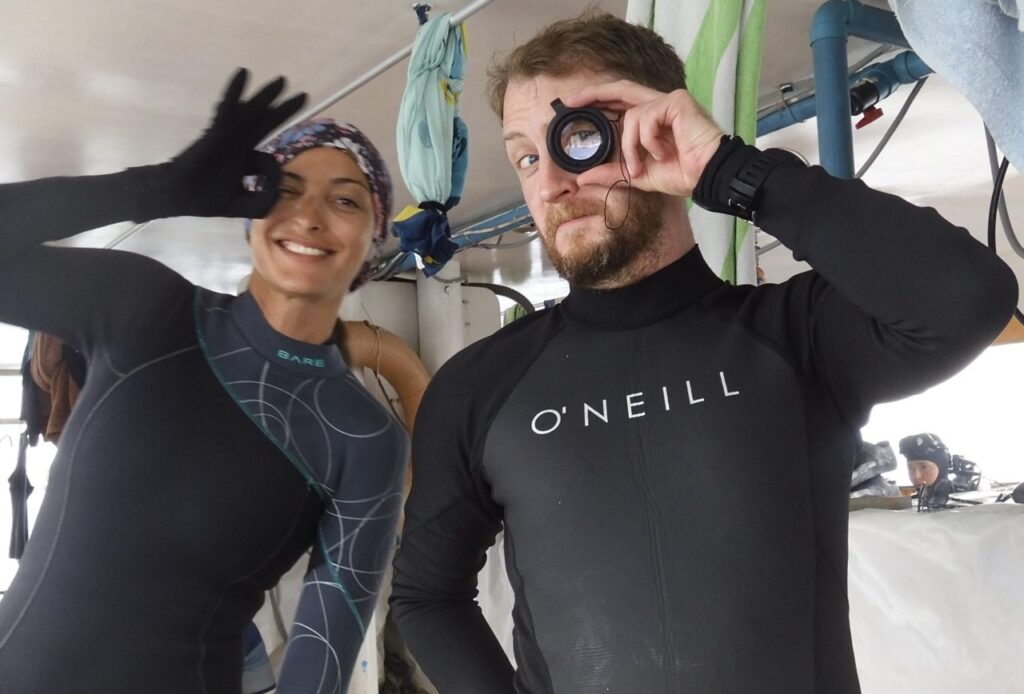
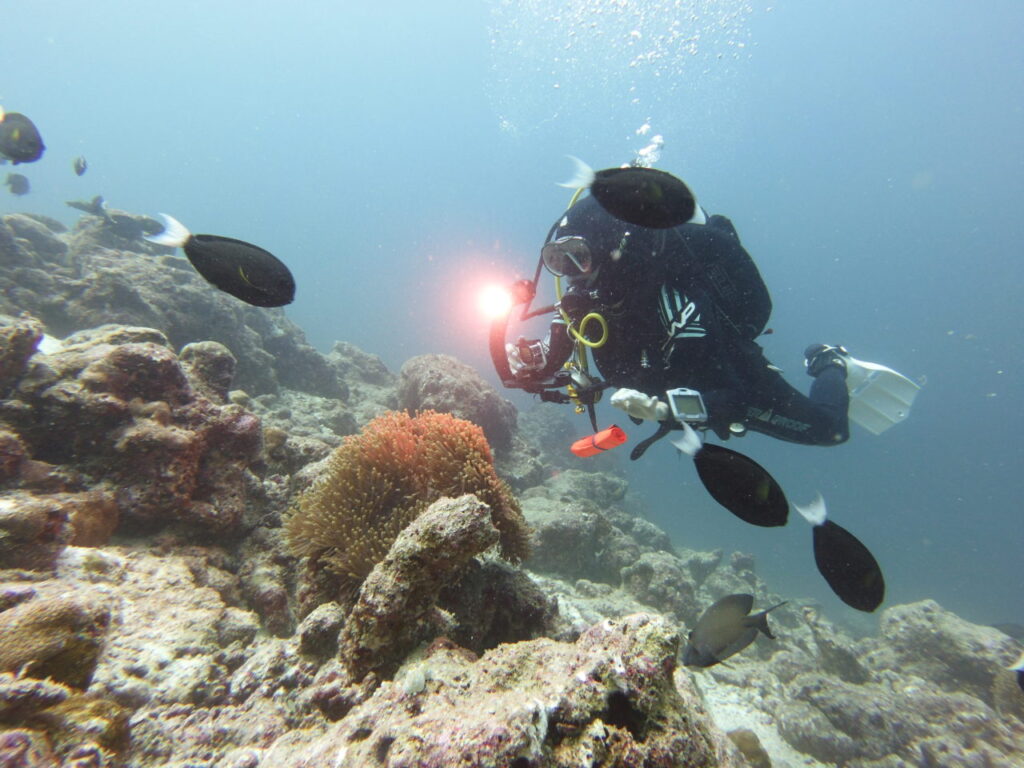
Alex
Regions of the Maldives:
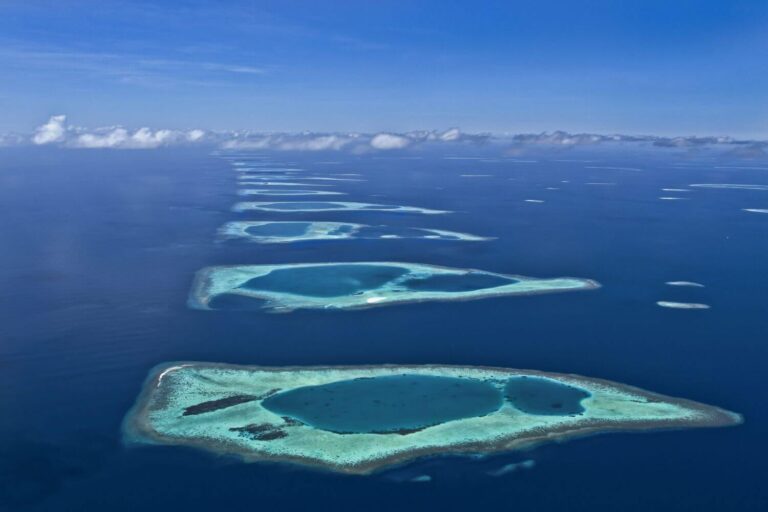
The Maldives can be divided into five regions: central – the most famous and popular area, south and deep south which are more off-the-beaten-track and north and far north which are the hardest to reach.
In some ways, these regions are all fairly similar – being subject to strong currents and having varied underwater landscapes of thilas, walls, overhangs, caves and large expanses of open water. Throughout each of them, divers can find manta cleaning stations and reef sharks in high numbers as well as having a good chance of spotting a whale shark.
However, these five regions do have their unique points. The central region is the easiest to reach and most touristic, with the most liveaboards and resorts. Whilst currents can occur here, they’re not quite as frequent as at other regions.
The south and deep south regions are more off the beaten track. Some of the species that are not so common to spot around the central region – such as tiger sharks, mola mola and oceanic mantas may be easier to see down south and deep south…but it’s not a gaurenteed and said species still can appear in the central region!
The north and far northern regions are even less explored and have the fewest tourists – they’re the final frontier of scuba exploration in the Maldives and offer unique experiences like huge caves and wreck diving!
#1 Central Region
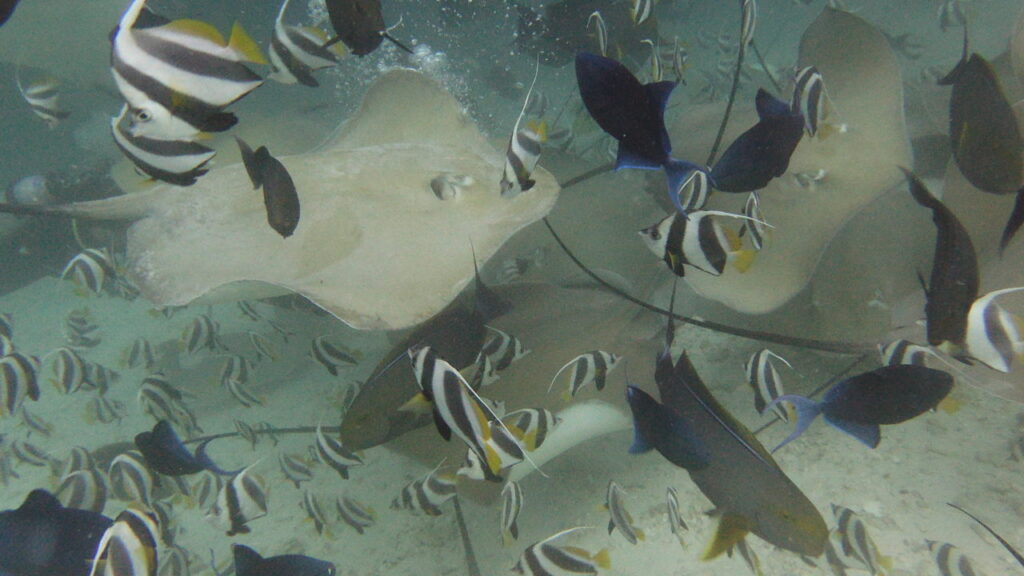
The most famous and popular region of the Maldives is also the cheapest and easiest to reach. The main central atolls are Male atoll and Ari atoll; both are well known for lots of large marine life and were the first atolls to be explored by divers.
During our missions around the Central Region with Soleil 2 and Iruvai, we at Diving Squad have so far seen multiple grey reef, whitetip reef, spinner, tiger, bull and nurse sharks as well as reef mantas, stingrays, guitar sharks, turtles, dolphins and countless pelagic fish, reef fish, octopus, nudibranch, crustaceans, reefs and a wreck.
(Some people in Alex’s group also saw a whale shark but he missed it because he was busy eating a sandwich!).
Male atoll has a varied underwater landscape of cliffs, caves, swim throughs and overhangs and is home to some of the best corals in the country. North Male atoll is the location of the Maldives main international airport: Velana.
Ari atoll is the closest atoll to Male. There are many thilas here and it’s a great place not only to see lots of reef sharks and various species of rays (including eagle rays and mantas), but also rarer marine life such as guitar sharks and whale sharks!
Within the central region, there are also two much smaller atolls close by: Rasdhoo and Vaavu. Rasdhoo atoll; which is sometimes described as part of Ari atoll is one of the best places in the Maldives to see hammerhead sharks. Vaavu atoll offers a lot of exciting drift dives instrong currents, with various reef sharks as well as superb night diving.
If it’s your first time diving the Maldives, we strongly recommend you dive the central region.
Click Blue Text to Expand Info on Maldives Atolls.
North Male Atoll:
North male atoll is best known for lots of large marine life including reef sharks, mantas and whale sharks.
The epic underwater geography is comprised of current swept channels, twisting caves, many swim throughs and mighty drop-offs. Male atoll is featured in at least some of the itineraries of all Maldives liveaboards. A few favourite dive sites of north male atoll are:
- Manta Point: a popular manta cleaning station, where one can see many mantas on a single dive. From May to October, they gather in large numbers, sometimes in the hundreds! From 39 feet onwards, there are many beautiful coral formations, frequented by reef sharks, leaf fish, napoleon fish and turtles.
- Banana reef: One of the most famous and popular north male atoll dive sites, banana reef is a protected marine area with a dramatic underwater landscape defined by cliffs, caves and overhangs. These are covered with vibrant hard and soft corals that are home to a wide assortment of marine life, including larger species such as napoleon wrasse, barracudas, snappers and groupers. Also look out for reef sharks, eagle rays and manta rays!
- Maldives Victory Wreck: The best wreck in north male atoll. It’s a 328 feet long Singaporean cargo ship which ran aground in 1981 and now lies at 39 – 115 feet below sea level, encrusted by colourful hard and soft corals and sea fans. This wreck has many interesting local residents such as batfish, large schools of fusiliers, frogfish and the occasional passing turtle.
South Male Atoll:
South male atoll is separated from north male atoll by the vaadhoo kandu. Kandu’s – or channels are a major feature of south male atoll diving (read more about terminology here!), so expect a lot of strong currents!
On the eastern reef wall there are 6 channels through which an immense volume of water flows, bringing with it endless nutrients, which attract immense shoals of fusiliers and other small fish as well as larger marine life including sharks and eagle rays. The stronger the current, the more fish you’ll see! A couple of favourite south male atoll diving sites are:
- Cocoa Thila: One of the most well known diving sites in the Maldives, Cocoa Thila is a deep water pinnacle that lies on the outer edges of south male atoll. For the most part it’s an exciting drift dive, but its many ravines and overhangs do provide a refuge for divers to shelter in from the strong currents. Look out for large marine life such as sweetlips, snappers, silver tip and white tip sharks, eagle rays and groupers.
- Vadhoo Caves: lie on the northern side of south male atoll and is a series of caves in which to escape the powerful current. Exploring the area, you notice a variety of marine life sharing the caves with you including unicorn-fish, soldierfish and turtles as well octopus, napoleon wrasse, nudibranch and crustaceans. Great fun for advanced divers!
North Male Atoll:
North male atoll is best known for lots of large marine life including reef sharks, mantas and whale sharks.
The epic underwater geography is comprised of current swept channels, twisting caves, many swim throughs and mighty drop-offs. Male atoll is featured in at least some of the itineraries of all Maldives liveaboards. A few favourite dive sites of north male atoll are:
- Manta Point: a popular manta cleaning station, where one can see many mantas on a single dive. From May to October, they gather in large numbers, sometimes in the hundreds! From 39 feet onwards, there are many beautiful coral formations, frequented by reef sharks, leaf fish, napoleon fish and turtles.
- Banana reef: One of the most famous and popular north male atoll dive sites, banana reef is a protected marine area with a dramatic underwater landscape defined by cliffs, caves and overhangs. These are covered with vibrant hard and soft corals that are home to a wide assortment of marine life, including larger species such as napoleon wrasse, barracudas, snappers and groupers. Also look out for reef sharks, eagle rays and manta rays!
- Maldives Victory Wreck: The best wreck in north male atoll. It’s a 328 feet long Singaporean cargo ship which ran aground in 1981 and now lies at 39 – 115 feet below sea level, encrusted by colourful hard and soft corals and sea fans. This wreck has many interesting local residents such as batfish, large schools of fusiliers, frogfish and the occasional passing turtle.
South Male Atoll:
South male atoll is separated from north male atoll by the vaadhoo kandu. Kandu’s – or channels are a major feature of south male atoll diving (read more about terminology here!), so expect a lot of strong currents!
On the eastern reef wall there are 6 channels through which an immense volume of water flows, bringing with it endless nutrients, which attract immense shoals of fusiliers and other small fish as well as larger marine life including sharks and eagle rays. The stronger the current, the more fish you’ll see! A couple of favourite south male atoll diving sites are:
- Cocoa Thila: One of the most well known diving sites in the Maldives, Cocoa Thila is a deep water pinnacle that lies on the outer edges of south male atoll. For the most part it’s an exciting drift dive, but its many ravines and overhangs do provide a refuge for divers to shelter in from the strong currents. Look out for large marine life such as sweetlips, snappers, silver tip and white tip sharks, eagle rays and groupers.
- Vadhoo Caves: lie on the northern side of south male atoll and is a series of caves in which to escape the powerful current. Exploring the area, you notice a variety of marine life sharing the caves with you including unicorn-fish, soldierfish and turtles as well octopus, napoleon wrasse, nudibranch and crustaceans. Great fun for advanced divers!
North Male Atoll:
North male atoll is best known for lots of large marine life including reef sharks, mantas and whale sharks.
The epic underwater geography is comprised of current swept channels, twisting caves, many swim throughs and mighty drop-offs. Male atoll is featured in at least some of the itineraries of all Maldives liveaboards. A few favourite dive sites of north male atoll are:
- Manta Point: a popular manta cleaning station, where one can see many mantas on a single dive. From May to October, they gather in large numbers, sometimes in the hundreds! From 39 feet onwards, there are many beautiful coral formations, frequented by reef sharks, leaf fish, napoleon fish and turtles.
- Banana reef: One of the most famous and popular north male atoll dive sites, banana reef is a protected marine area with a dramatic underwater landscape defined by cliffs, caves and overhangs. These are covered with vibrant hard and soft corals that are home to a wide assortment of marine life, including larger species such as napoleon wrasse, barracudas, snappers and groupers. Also look out for reef sharks, eagle rays and manta rays!
- Maldives Victory Wreck: The best wreck in north male atoll. It’s a 328 feet long Singaporean cargo ship which ran aground in 1981 and now lies at 39 – 115 feet below sea level, encrusted by colourful hard and soft corals and sea fans. This wreck has many interesting local residents such as batfish, large schools of fusiliers, frogfish and the occasional passing turtle.
South Male Atoll:
South male atoll is separated from north male atoll by the vaadhoo kandu. Kandu’s – or channels are a major feature of south male atoll diving (read more about terminology here!), so expect a lot of strong currents!
On the eastern reef wall there are 6 channels through which an immense volume of water flows, bringing with it endless nutrients, which attract immense shoals of fusiliers and other small fish as well as larger marine life including sharks and eagle rays. The stronger the current, the more fish you’ll see! A couple of favourite south male atoll diving sites are:
- Cocoa Thila: One of the most well known diving sites in the Maldives, Cocoa Thila is a deep water pinnacle that lies on the outer edges of south male atoll. For the most part it’s an exciting drift dive, but its many ravines and overhangs do provide a refuge for divers to shelter in from the strong currents. Look out for large marine life such as sweetlips, snappers, silver tip and white tip sharks, eagle rays and groupers.
- Vadhoo Caves: lie on the northern side of south male atoll and is a series of caves in which to escape the powerful current. Exploring the area, you notice a variety of marine life sharing the caves with you including unicorn-fish, soldierfish and turtles as well octopus, napoleon wrasse, nudibranch and crustaceans. Great fun for advanced divers!
North Male Atoll:
North male atoll is best known for lots of large marine life including reef sharks, mantas and whale sharks.
The epic underwater geography is comprised of current swept channels, twisting caves, many swim throughs and mighty drop-offs. Male atoll is featured in at least some of the itineraries of all Maldives liveaboards. A few favourite dive sites of north male atoll are:
- Manta Point: a popular manta cleaning station, where one can see many mantas on a single dive. From May to October, they gather in large numbers, sometimes in the hundreds! From 39 feet onwards, there are many beautiful coral formations, frequented by reef sharks, leaf fish, napoleon fish and turtles.
- Banana reef: One of the most famous and popular north male atoll dive sites, banana reef is a protected marine area with a dramatic underwater landscape defined by cliffs, caves and overhangs. These are covered with vibrant hard and soft corals that are home to a wide assortment of marine life, including larger species such as napoleon wrasse, barracudas, snappers and groupers. Also look out for reef sharks, eagle rays and manta rays!
- Maldives Victory Wreck: The best wreck in north male atoll. It’s a 328 feet long Singaporean cargo ship which ran aground in 1981 and now lies at 39 – 115 feet below sea level, encrusted by colourful hard and soft corals and sea fans. This wreck has many interesting local residents such as batfish, large schools of fusiliers, frogfish and the occasional passing turtle.
South Male Atoll:
South male atoll is separated from north male atoll by the vaadhoo kandu. Kandu’s – or channels are a major feature of south male atoll diving (read more about terminology here!), so expect a lot of strong currents!
On the eastern reef wall there are 6 channels through which an immense volume of water flows, bringing with it endless nutrients, which attract immense shoals of fusiliers and other small fish as well as larger marine life including sharks and eagle rays. The stronger the current, the more fish you’ll see! A couple of favourite south male atoll diving sites are:
- Cocoa Thila: One of the most well known diving sites in the Maldives, Cocoa Thila is a deep water pinnacle that lies on the outer edges of south male atoll. For the most part it’s an exciting drift dive, but its many ravines and overhangs do provide a refuge for divers to shelter in from the strong currents. Look out for large marine life such as sweetlips, snappers, silver tip and white tip sharks, eagle rays and groupers.
- Vadhoo Caves: lie on the northern side of south male atoll and is a series of caves in which to escape the powerful current. Exploring the area, you notice a variety of marine life sharing the caves with you including unicorn-fish, soldierfish and turtles as well octopus, napoleon wrasse, nudibranch and crustaceans. Great fun for advanced divers!
Many consider Ari Atoll to offer the best diving within the entire country, certainly around the central region and especially with respect to lots of whale shark sightings and big manta gatherings. It’s therefore a relief to see that, like the Male Atolls, Ari atoll is heavily featured on the routes of virtually all maldives liveaboards.
Ari atoll is quite different to other areas in the Maldives, because it doesn’t feature many long stretches of barrier reef. Instead, there are many thilas with submerged pinnacles from both inside and outside the atoll lagoons, which are subject to strong currents that make it hard for coral to grow in much abundance on them.
However, these more open landscapes and the strong currents result in plankton rich waters, which attract a lot of exciting, large marine life such as whale sharks, hammerhead sharks, mantas, grey reef sharks and guitar sharks!
There are over 50 diving sites within Ari Atoll! Here’s a few favourites:
- Maaya Thila: a pinnacle that begins at 20 ft and drops down to 40ft before a sheer drop-off leads to 100ft. In the shallows, it’s home to zebra morays, frogfish and colourful nudibranch, whereas further down, there’s scores of grey reef sharks, eagle rays and even the odd guitar shark. It’s also considered to be one of the best dive sites in the Maldives to see a whale shark.
- Fish Head: Located in the mid-eastern region of the atoll, fish head is a pinnacle that plunges from 32 – 115 feet and is covered in black coral bushes and dotted with caves and overhangs. There is a resident pack of around 16 grey reef sharks here, plus many scores of batfish and fusiliers; all amidst thousands of blueline snappers.
- Donkalo Thila / Rangali Madivaru / Kudarah Thila: Three separate sites, all of which are well known manta ray cleaning stations.
Ocean’s Divine is a diving liveaboard that runs itineraries that focus exclusively on Ari Atoll.
A tiny atoll that is located around thirty kilometres northeast of Ari atoll, which it is sometimes labelled as part of within diving itineraries.
Rasdhoo atoll may have relatively few scuba sites but it’s universally considered one of the best places to spot hammerhead sharks; especially at Hammerhead Point; a challenging dive on an outer reef alongside a sheer drop of 656 ft (200m).
Dives here usually start at dawn (around 6am) as it’s at this time that hammerhead sharks are drawn up from the depths to feed around the reef!
Vaavu Atoll; consists of the natural atolls of Felidhu atoll and Vaataru reef. It is the smallest administrative division of the Maldives and is located some 40 kilometres south of Male.
Dive sites around vaavu atoll feature a lot of interesting topography in the form of a narrow channel with various caves, overhangs, thilas and swim throughs with a lot of soft coral.
Expect large numbers of grey reef and white tip reef sharks, eagle rays, tuna and trevallies. Lucky divers can also spot potato groupers, mantas and even hammerhead sharks around dawn.
Most Vaavu atoll dive sites are subject to strong currents, so Vaavu atoll is best suited for advanced divers (even more so than other Maldivian regions). There is also some great night diving around Vaavu atoll!
Click Blue Text to view Central Maldives Liveaboards & Resorts:
Good news! The central atolls of the Maldives; Male, Ari, Rasdhoo and Vaavu are collectively explored on at least one of the itineraries of just about every Maldivian liveaboard out there. Check out our brutal reviews of the best Maldives liveaboards – every liveaboard featured on that page runs a trip around the central Maldives.
It’s almost always cheaper to explore the Maldives via a liveaboard and not a resort. Plus, liveaboards cover a much wider variety of dive sites within the Maldives as they explore multiple atolls within each region and run some itineraries that cover more than one Maldives region.
Just remember, liveaboard divers need to be experienced divers – as liveaboard’s generally only take guests who have their advanced open water certification and around 30+ logged dives.
There are more resorts on the atolls of Male and Ari than anywhere else in the Maldives. Practically every resort in the Maldives can arrange for you to go scuba diving – if they don’t have diving facilities of their own, they will link you up with the nearest dive school / centre.
By diving from a resort in the Maldives you can take things as fast or as slow as you like; that is to say you can choose how much and how often you dive as well as move on at any point.
Another advantage of a Maldives resort, is that most can arrange additional activities for you, such as watersports like water skiing and windsurfing, cultural tours and evening entertainment.
Again, like the scuba diving, all of these extra experiences do come at a (usually quite steep) extra cost.
Staying at a Maldives resort and paying extra to dive, will normally cost more than most liveaboards. Take a look at Raddison Blue Resort (located at Ari atoll), to see just how luxurious (but expensive!) a Maldives resort can get!
On the other end of the spectrum, there are a very few Maldives resorts such as Ocean Pearl and Elite Beach Inn (both located on north male), that are comparatively cheap and will cost less to stay at than the overall price of some liveaboards.
If you want to go on the hunt for Maldives resorts, here are some useful links (you can toggle settings such as price, features and facilities:
#2 South Region
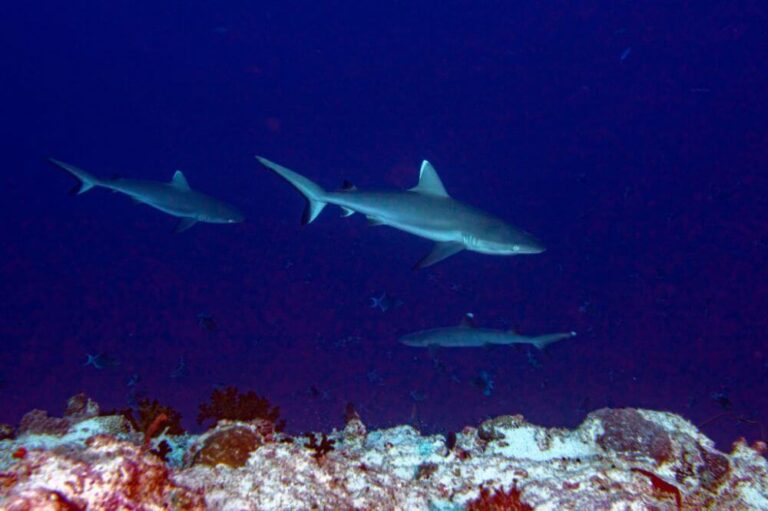
Once you make it to the southern region of the Maldives, things suddenly get a lot quieter. This region is a couple of hundred km south of Male, making it harder to reach which means there’s less crowds. That means less resort choices but also fewer other divers.
The major southern atolls are Laamu, Thaa and Meemu atolls. Diving around these atolls is mainly characterised by fast currents where one can witness many large species such as grey reef sharks, dogtooth tuna and rays hunting arge schools of fish.
However, there are also a good number of beginner friendly dive sites within sheltered atoll lagoons that are free of currents – especially around Laamu. Here, divers can explore the colourful coral gardens that are rampant with quirky macro critters, napoleon wrasses and green turtles.
At Thaa atoll, there are 37 known diving sites and new ones are still being discovered! There is many a great drift dive here, some truly excellent wall diving plus a lot of shark action and other large fish such as giant trevally, barracuda and snapper!
Meemu is rarely visited, but it offers some great current diving with the usual large pelagic action – plus dolphins are sometimes known to make an appearance.
Click Blue Text to Expand Info on Maldives Atolls.
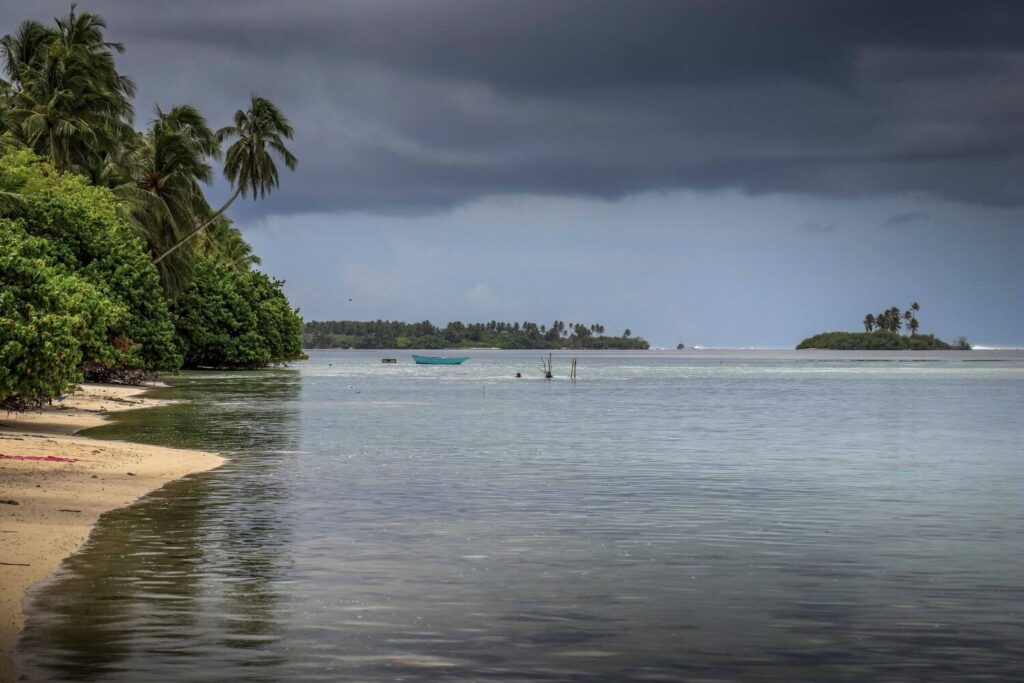
An exceptionally beautiful and off-the beaten track atoll, Laamu atoll is still relatively unexplored, with just a dozen or so official dive sites and more waiting to be discovered along it’s 48km of coastline!
Most of the diving here is characterised by deep channels and strong currents which draw massive schools of fish – in fact, Laamu atoll is typically considered the best place in the Maldives for seeing huge fish schools; which in turn attract apex-predatory marine life such as sharks, rays and other big fish.
Drifting along with the strong current whilst marvelling at the likes of white tip reef sharks and dogtooth tuna darting amongst massive schools of fusiliers makes for some truly adrenaline soaked diving!
Meanwhile, the hard and soft corals within the atoll lagoon are in excellent condition, thanks to the remoteness of this part of the Maldives.
This, combined with the lack of currents around dive sites within the lagoon, makes it a great area for beginners and underwater photography as there’s many colourful macro critters among the reef as well as napoleon wrasse and green turtles. Laamu also has one of the only year round manta ray cleaning stations of the Maldives; Hithadhoo corner!
It’s a little harder to get to Laamu atoll, but this means you won’t have to share dive sites with any of the big crowds for which the Maldive’s central region is known.
Another rarely visited atoll, consisting of 59 islands, Thaa boasts 37+ scuba diving sites with many exciting drift dives where tuna, rays and sharks can be easily seen hunting large schools of fish. This is also another particularly good atoll to spot a whale shark!
Furthermore, there is some excellent coral reef here; with incredible coral walls and overhangs at sites such as 7-Up and intricate and colourful structures at Gorgonian Coral Garden.
There’s some other cool things about Thaa to. Because of the high levels of wind it’s exposed to, it is a popular destination for surf safaris. Also, on Dhiyamigili island, lie the ruins of the palace of Mohammed Imaduddin II who ruled from 1704-1721 and founded one of the Maldives’ longest running dynasties!
Within Thaa atoll, there is only one resort that can arrange for you to go diving: the insanely luxurious yet also extremely expensive ($1400+ a night!) Como Maalifushi which is located on it’s own private island: Maalifushi.
Meemu is rarely visited and is the least explored of the southern atolls. Currents are strong and shark, tuna and snapper numbers are high as they chase after huge schools of fish.
There are several manta ray cleaning stations around meemu atoll but even more excitingly, at dive sites such as Medhufushi Thila, divers can sometimes meet dolphins!
Click Blue Text to view South Maldives Liveaboards & Resorts:
- Laamu: If I was going to stay at any resort in the south Maldives, it would be one situated within the beautiful atoll of Laamu. The two most popular options there are the insanely luxurious, eco-friendly Six Senses, and the more affordable Reveries Diving Village with it’s own gym, laptop workspace and gym. Or, check out other Laamu resorts.
- Thaa: Only one option: Como Maalifushi – it’s very expensive but offers a guest experience that is fit for a king.
- Meemu: Only two options: Cinnamon Hakuraa Huraa is a mid-price resorts that feels like a luxury one. Mefhufushi Resort is the cheaper option.
#3 Deep South Region
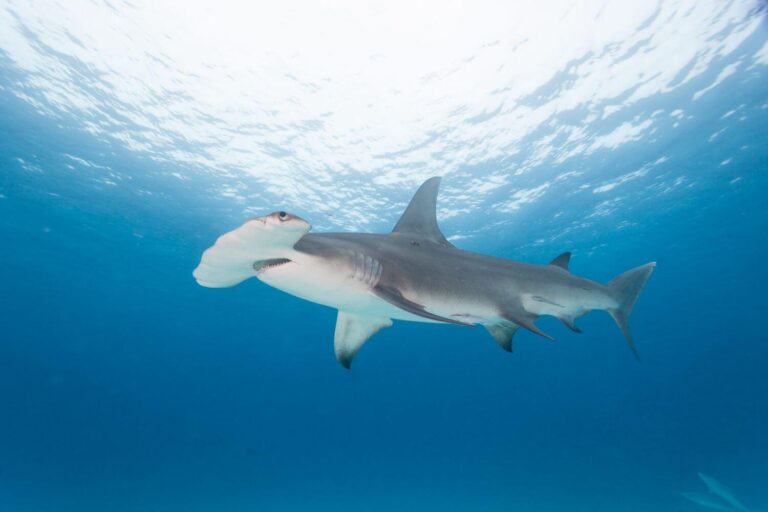
The best place for seeing lots of different shark species and other large marine life is undoubtedly the Maldives’ deep south – it is also one of the country’s most off the beaten track regions; consisting of Fuvahmulah, Addu and Huvadhu atolls.
Throughout the many exciting dive sites of these atolls, divers can encounter a dozen different sharks species as well as mantas, mola mola, tuna, sailfish and sometimes even pilot whales.
Fuvamulah is widely considered to be the most beautiful island in the entire Maldives. It is nicknamed the Maldivian Galapagos for it’s spectacular variety of marine life. Divers can witness grey reef sharks, silver tip sharks, white tip sharks, tiger sharks, thresher sharks and whale sharks all around this one atoll. Also look out for black oceanic manta rays!
Addu offers superb dive conditions all year round and is a great place to spot silky sharks, tiger sharks, manta rays, tuna and grey reef sharks. It is also the location of the Maldives biggest shipwreck; the 134 meter long British Loyalty, which is covered in colourful hard coral and soft corals and is home to a variety of fish and other marine creatures.
At Huvadhu there is some great coral reef diving among a varied topography with many macro critters and turtles as well as more open scuba sites where one can encounter nurse sharks, leopard sharks and sometimes even hammerhead shark.
Click Blue Text to find out more about each Atoll:
Fuvamullah atoll offers some of the most exciting diving in all of the Maldives. It is the closest to the equator of all the country’s islands and coral reefs, which means there are no seasonal changes, resulting in world class dive conditions year round. This is a single island atoll and it’s island is the third largest in the Maldives.
Due to it’s isolation and unique environment as well as the incredible diversity of marine life in it’s surrounding waters, Fuvahmullah atoll has earned itself the nickname: “the Maldivian Galapagos”.
Not only does it promise the usual suspects associated with Maldives diving: scores of sharks and other big fish chasing after vast schools of smaller fish, it also offers the chance to see more species of large marine life than anywhere else in the Maldives.
This is a true advanced divers paradise and as of yet one that is still rarely visited and very far from development.
At Fuvahmullah atoll, one can also spot many white tip sharks, grey reef sharks, silver tip sharks and also many tiger sharks, especially at Tiger Zoo, where numerous tiger sharks are drawn to this area by waste produced from the local fish market every day – it’s easy to see multiple tiger sharks on any given dive, with some measuring 5 meters long!
It’s also pretty easy to see thresher sharks here, when diving down to deep cleaning stations in the early dawn or at dusk. Thresher sharks are instantly recognisable with their extremely long upper tail tips, which are often as long as the rest of the sharks body!
Also look out for whale sharks, which can be seen here year round in addition to huge mola mola fish (which can measure 14 feet from fin to fin!), bonitos, sailfish and even pilot whales!
Unlike the rest of the Maldivian atolls, there are no reef manta rays around Fuvahmulah atoll. Instead, black oceanic mantas are the most common species with most sightings of this species in the Maldives coming from this atoll, sometimes in large congregations.
There’s a number of great Maldives liveaboards that feature Fuvahmulah atoll in their deep south itineraries. Check out Maldives liveaboards that visit Fuvahmulah.
Dive Resorts: You can stay at a resort and dive with Fuvahmulah dive school; a highly praised dive centre that also carry out a lot of conservation based research on pelagic marine life.
The cheapest resorts on Fuvahmulah atoll are Marina Boutique Hotel and Fuvahmulah Inn – at just over $50 a night each, the combined cost of staying at either of these resorts and paying for food and to dive at Fuvahmulah Dive School ( a 5 minute drive away), will be pretty similar to the price you would pay for a mid-price Maldives liveaboard.
Alternately, if you have a lot of money to play with, you could splash out and stay at Alefehi Retreat, the most luxurious resort in Fuvahmulah atoll and perhaps the entire Maldives!
The furthest south all the Maldivian atolls, Addu lies 335 miles south of the capital of Male. It tips just over the equator and along with Fuvahmulah is the only Maldivian atoll in the southern hemisphere. Diving conditions here are superb all year round with excellent visibility of up to 35 meters.
Although there are less reef fish compared to other parts of the Maldives, there are many large predators including silky sharks, tiger sharks, manta rays, tuna and grey reef sharks.
There are also some very pretty coral gardens that are sheltered from the currents, making them easy to explore for beginner divers.
Also, divers can explore the largest shipwreck in the Maldives at Addu atoll: The British Loyalty Wreck, an almost 6000 tonne oil tanker that now lies at 33m deep, having been scuttled for target practice by a British warship in 1946.
Lying on it’s side, the body of the ship is covered with table coral, soft coral, gorgonians and black corals and is home to leaf fish, batfish, frogfish and various crustaceans.
Another favourite dive site is shark point where you can see up to 20 grey reef sharks idling about on the bottom of the seabed.
Also known as Gaafu atoll or Huvadhu atoll, it is defined by a central lagoon that is 65 kilometres (40 miles) across at the widest point and up to 279 ft (85 meters) deep.
There are over 230 islands within the centre of this lagoon, more than any other atoll! Subsequently, the underwater topography is more varied than anywhere else in the Maldives; with many steep drop offs, twisting tunnels, dramatic walls, winding caves caves, thilas and tiny coral islets.
The lagoons substantial outer reef protects dive sites within it from the outer channels, which means there are many beginner friendly dive sites within.
Within these easier dive sites, scuba divers can marvel at the healthy coral reef, which is in immaculate condition thanks to this atolls remoteness. Many quirky macro critters make their home here and turtles are frequently seen grazing on the coral.
On the outside of the lagoon, divers will encounter fast flowing channels that give way to epic drift dives where grey and white tip reef sharks hunt after large schools of trevally and other species of schooling fish.
Like other deep south atolls, Huvadhoo is special because it is here that divers can encounter rarer shark species such as nurse sharks, tiger sharks and leopard sharks and sometimes even hammerhead sharks as well!
Click Blue Text to view Deep South Maldives Liveaboards & Resorts:
- Fuvahmulah: Marina Boutique Hotel: With rooms at around $50 a night , they are very affordable for a Maldives resort! Located just a few minutes ride from the environmentally active Fuvamulah diving school.
- Addu: South Palm Resort: Moderately priced, but very classy; this is a beachfront resort with an outdoor swimming pool, fitness centre and evening entertainment. As well as diving, they also offer watersports and local culture tours.
- Huvadhu: Raffles Maldives Meradhoo: Located on a beautiful, private island, it’s (insanely expensive!) accommodation options feature private pools and glass panels in the terraces so guests can marvel at the colourful marine life below. Scuba diving is available at an extra charge.
#4 North Region
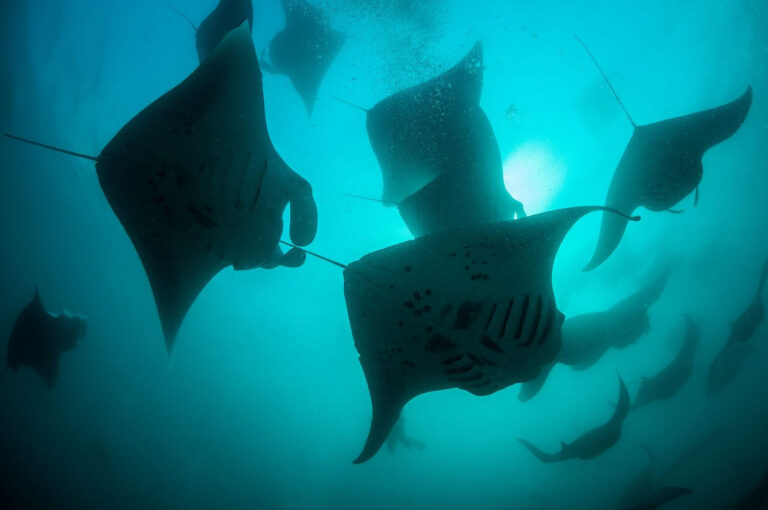
The Maldives’ northern region is less frequented than the southern and deep southern regions – it isn’t any harder to reach than down south, it’s just not quite as popular – for now! The major atolls here are Baa, Raa and Lhaviyani.
There is a great variety of diving in the Maldives north; from exciting drift dive action with reef sharks and other large marine life to numerous manta cleaning stations.
Baa atoll is famous for Hanifaru Bay. At certain times of year, hundreds (!) of manta rays can gather here; feeding in their rare cyclone formation, alongside multiple whale sharks. But be aware that scuba diving Hanifaru Bay is now prohibited!
This is to prevent large numbers of people disturbing mantas and whale sharks in what scientists have come to realise is an extremely important (yet also relatively confined) congregating spot for these species.
However, limited numbers of people can snorkel at Hanifaru Bay and this in itself is still a pretty awe inspiring experience on account of just how many manta rays one can see.
Baa atolls sites that can be dived have exciting underwater topography consisting of canyons, caves and thilas with many manta cleaning stations.
Raa, although rarely visited, is unusual for a Maldives atoll in that it’s dive sites are mainly characterised by reefs with non-existent currents and many quirky, macro critters and lots of hawksbill turtles.
Lhaviyani atoll is the most well explored northern atoll, having over 50 dive sites, most of which are defined by drift diving with many reef sharks and eagle rays hunting large schools of fish.
Click Blue Text to find out more about each Atoll:
Baa Atoll was awarded UNESCO reserve status in 2011 for the outstanding density of marine life found there. Consisting of 3 natural atolls and a total of 75 islands, it’s underwater topography is both varied and exciting; consisting of many colourful reefs, overhangs, caves and thilas.
Baa atoll is best known for Hanifaru Bay, which is well known as a nursery ground for grey sharks and stingrays; but most is famous for the fact that it draws more manta rays and whale sharks than anywhere else in the Maldives.
From May to December; but especially between July – October; plankton levels in Hanifaru Bay skyrocket and this draws huge numbers of manta rays! Their numbers can reach the hundreds and when this happens; these normally graceful giants enter a feeding frenzy, going into their rarely observed cyclone feeding formation.
Adding to the excitement, multiple whale sharks can also make an appearance at the same time, making for a truly incredible spectacle.
However! It’s important to note that in an effort to protect this marine biodiversity hot spot, scuba diving Hanifaru Bay is now prohibited.
But don’t despair! Snorkelling is still permitted and whilst this may not sound as exciting; the simply vast numbers of manta ways and numerous whale sharks that can be seen here, make snorkelling Hanifaru Bay an awesome experience. Your dive operators – whether liveaboard or resort, can arrange for you to snorkel at Hanifaru Bay.
There are some other very cool sites in the Maldives around Baa atoll; where it is possible to scuba dive. Nelivaru Haa offers a beautiful coral reef at 46 feet deep with unique underwater topography; star shaped canyons are found within the middle of the reef along with overhangs and caves that are covered in a lot of colourful hard coral and soft coral.
This is perhaps the best place in the Maldives to spot stingrays, moray eels, groupers, batfish and napoleon wrasse all together. There’s also a number of manta cleaning stations where one can dive; notably Horuadhoo thila and dhonfaru thila.
Located about 20 km further north than Baa, Raa atoll is occasionally featured in the northern route itineraries of some liveaboards; however this is not very often, which makes it a good, off the beaten track dive destination.
Raa atoll is characterised by many giris. A giri is a shallower version of a thilla, which sometimes breaks the surface. Underwater, there is a diverse range of topography with many overhangs, caverns and sloping coral reefs.
Quite unusually for the Maldives; Raa atoll’s reefs are home to a wide assortment of quirky macro critters including various species of octopus, crustaceans, nudibranch and other, small reef animals.
That said; other deeper sites offer the more classical Maldivian diving experience of hunting jacks, tuna and reef fish diving after vast and swirling schools of fish.
With over 50 dive sites, Lhaviyani atoll is well known for a lot of grey reef shark action, among a variety of exciting drift dives and stunning wall dives.
The coral reef isn’t as developed as at Raa atoll; with most sessile life mainly consisting of sea whips, black coral bushes and small fans and sponges. However, the two main current swept channels within which most Lhaviyani diving sites are located, are well known for large marine life.
Divers here are likely to see a lot of eagle rays, devil rays, tuna, barracuda and grey reef sharks as well as scores of unicorn-fish, wrasse, red-toothed triggerfish and countless anthias. There also seem to be a lot of hawksbill turtles here!
Plus, within “the shipyard” there are two interesting wrecks that can be explored, one of which protrudes from the water’s surface as though it is still sinking.
Lhaviyani atoll is more developed for tourism than Baa or Raa, but still has fewer supersized resorts than other Maldivian areas. It’s therefore a good choice for anyone who wants to stay at a well developed Maldivian resort but without having to share the area with lots of other guests.
Above water, Lhaviyani atoll is defined by beautiful tiny islands, ringed by white sand beaches and scattered in a sea of endless blue.
Click Blue Text to view North Maldives Liveaboards & Resorts:
- Baa: There’s quite a few resorts on Baa atoll! The cheapest option is Alvi Star Inn but most are a lot more expensive! Probably the most popular luxury options at Baa are Four Seasons Resort and Dusit Thani.
- Raa: There’s not any dive operators on Raa atoll…yet!
- Lhaviyani: Cheapest (with diving): Luna Lodge. Most Luxurious: Kudadoo Maldives Private Island. Or search Other Lhaviyani Resorts.
#5 Far North Region
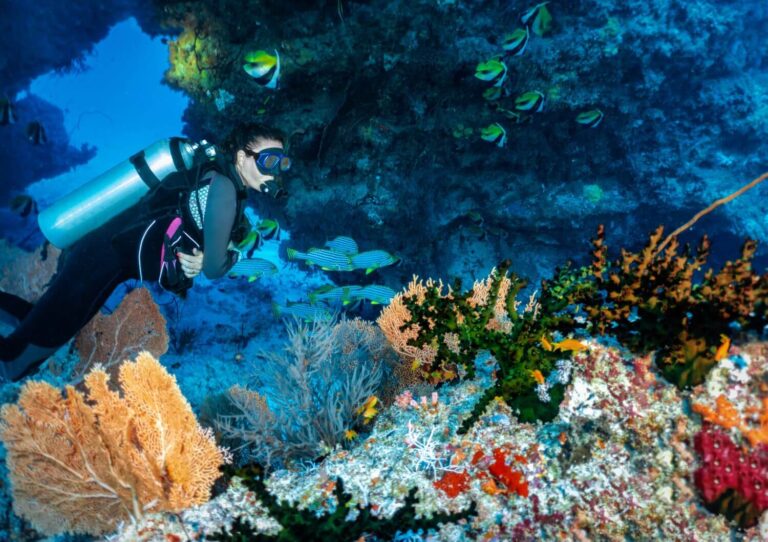
The least explored region of the entire Maldives is also the the most far flung, being some 300km away from male. If seeing as few other people and experiencing all new diving sites is your main goal, this is the best place in the Maldives to go.
The atolls are Haa Alifu, Haa Dhaalu and Shaviyani. There are some truly immaculate reefs around all of them. New dive sites are still being discovered with no sign of running out any time soon!
Haa Alifu has many epic drift dives (suitable for advanced divers!), with lots of shark action as well as manta cleaning stations, a decent sized shipwreck and the chance to see leopard sharks – which are rare in other parts of the Maldives.
Haa Dhaalu atoll is known for its epic underwater geology consisting of mighty pinnacles, huge underwater caves and awesome wall dives. Look out for nurse sharks, marble rays and black tip and white tip reef sharks!
Very little of the rarely visited Shaviyani atoll has been explored, but around those of its dive sites which are known, you can spot guitar sharks, rays and grey reef sharks.
Click Blue Text to find out more about each Atoll:
Located at the very northernmost tip of the Maldives, Haa Alifu contains 42 islands, 14 of which are inhabited and just 3 of which have tourist resorts.
The channels of Haa Alifu are considerably wider and more shallow compared to the rest of the Maldives. This results in weaker currents; which means that whilst many dive sites here are of the drift variety, they are not as intense as elsewhere in the Maldives, giving divers a little more time to take everything in.
In addition to the usual large marine life suspects of the Maldives – grey reef sharks, manta rays, eagle rays and so forth, Haa Alifu is also one of the few atolls where it’s easy to spot leopard sharks, a type of carpet shark that can rest motionless on the seafloor. A few favourite dives are:
Baarah Thila – Healthy and vibrant coral reefs where countless fish including barracuda, moray eels, napoleon wrasse, mackerels and snappers can be seen in abundance. Down on the seabed at around 99ft, one can spot multiple leopard sharks resting on the floor as they sleep behind clusters of coral coated rock. Nearby, there is a manta cleaning station.
Maadhoo wreck – An 80 meter long wreck that lies at 5 to 18 meters deep, it lies alongside four chimneys that rise out of the water. Leopard sharks can be found sheltering from the moderate current behind the stern, whilst eagle rays dart in and out of the wreck and white tip reef sharks patrol nearby.
Covering the wreck is an assortment of hard and soft corals and camouflaged against these are frogfish and scorpionfish, whilst less inconspicuous nudibranch ooze across in search of their next meal.
Heaven and Hell – a thila that starts at 59 feet and has some of the atoll’s very best corals. As you descend to 90 feet, you’ll realise that the reefs’ overhangs are adorned with beautiful pink, blue, yellow and green soft corals. Look out for turtles nibbling on the coral as well as eagle rays and the occasional manta passing overhead!
Haa Dhaalu atoll has some of the most exciting scuba diving in all of the Maldives! With epic underwater geology that ranges from mighty, coral coated rock pinnacles to vast underwater caves as well as wide channels, there are a lot of very cool experiences to be had here. Let’s take a look at a few of the best dive sites of Haa Dhaalu:
Nellaidhoo Thila – a tall pinnacle where scores of black and white tip reef sharks feed among a flurry of smaller fish. You can enjoy a spectacular underwater show as the many sharks seem to come hurtling straight towards you, only to veer away at the last moment in pursuit of their prey.
If you can distract yourself from the awesome hunting spectacle for just a moment look up to see batfish, giant trevally and manta rays swirling above you and then steel a glance downwards towards the moray eels and nudibranch poking out from the profusion of healthy coral structures below.
Buda Cave – It’s cave mouth is a whopping 186 ft across, making it suitable both for those experienced divers with cave diving experience and for those without.
Even within just the first 15 meters of the cave, you can spot sleeping nurse sharks and patrolling white tip reef sharks. Keep an eye out for marble rays dozing behind the rocks.
Also, when seen from the inside of the cave, the contrast of the sunlight filtering through the water framed by the coral coated cavern walls, makes for a beautiful sight to behold.
Perhaps the least developed of all the Maldives’ atolls, Shaviyani atoll is a rarely visited and little explored area just south of Haa Alifu and Dhaalu.
With vibrant reefs and large marine life action that includes reef sharks, guitar sharks and rays; there is still much of this area that requires further exploration and it seems likely that more dive sites will be discovered here in the future.
Generally speaking, “far north itineraries” of liveaboards mainly focus on Haa Alifu and Haa Dhaalu; with those that do stop at Shaviyani atoll, spending relatively little time there.
However, the allure of such an off the beaten track destination and the temptation of new dive sites awaiting discovery make it a nice addition to slightly longer far north bound itineraries.
Click Blue Text to view Far North Maldives Liveaboards & Resorts:
- Blue Voyager: “Best of Northern Atolls”: Haa Alifu, Haa Dhaalu, Shaviyani plus Raa, Baa & North Male.
- Carpe Novo: Runs a variety of itineraries that feature Haa Alifu, Haa Dhaalu and Shaviyani in addition to north and central regions.
- Haa Alifu: Only a couple of options that can arrange diving: Ja Manafaru is the most luxurious and popular. Hideaway Beach Resort is also a very good and slightly cheaper option.
- Haa Dhaalu: The Barefoot Eco Hotel offers extremely good value for money with awesome accommodation options and the chance for many extra activities and water-sports. It’s also the only resort at Haa Dhaalu that can arrange diving for it’s guests!
- Shaviyani: Just 2 options with diving: Fairmont and JW Marriot.
Diving Season - When is the Best Time to Dive the Maldives:
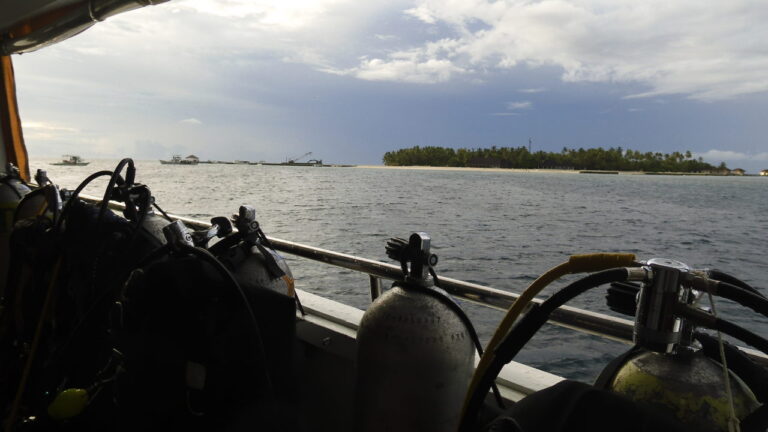
Diving the Maldives is possible all year round! Manta rays, sharks and other large pelagic animals can be seen at any given time. The likelihood that they will be seen is more determined by day to day factors such as high/low tide, the lunar cycle and sunrise-sunset.
However, most regions of the Maldives (central, south, north and far north) do experience seasonal fluctuations that change weather conditions which affects visibility and the strength of currents.
Also, there are certain parts of the year when more manta rays and whale sharks are present at specific parts of the Maldives. Let’s take a closer look:
January - April: Dry Season (Northeast Monsoon):
During these months, the wind blows from the northeast and there are clear skies, calm seas and plenty of sunshine.
Water visibility is greatest at this time of year; especially on the eastern side of the atolls, where divers can enjoy up to 35 meter visibility!
Although seas are calm on the surface, the current is actually strongest over this period; which results in a lot of fast paced drift diving!
Currents flow through underwater channels resulting in plankton flowing westwards into the open ocean – this attracts a lot of manta rays and whale sharks on the western outskirts of atolls.
This part of the year sees the biggest influx of tourism to the Maldives so expect more crowds both in and out of the water.
May - November: Wet Season (Southwest Monsoon):
Winds pick up, blowing in from the southwest during this period. This means seas can get a little rougher. Overhead the skies tend to be more cloudy and there are bouts of short and heavy rainfall, followed by sun.
By June, huge numbers of plankton have built up in the waters, especially around the eastern outskirts of atolls and this attracts many manta rays and whale sharks around these parts.
Due to the southwest monsoon causing rougher seas as well as the heavy build up of plankton, water visibility is not as good as during high season – but this does attract more mantas and whale sharks. During low season, crowds will be much fewer and resorts may be cheaper.
- The Maldives’ Deep South sits right on the equator and so does not experience any seasonal fluctuations. All year round, it’s weather and diving conditions can be compared to that of the Dry Season period.
December:
This is a transitional months between the dry and wet season and subsequently can be hard to predict. They can be either more like the dry or wet season and vary by the year. It’s usually best to err on the side of caution and assume it will be more akin to the wet season, minus the plankton build up.
Liveaboard vs Resort
Liveaboard:
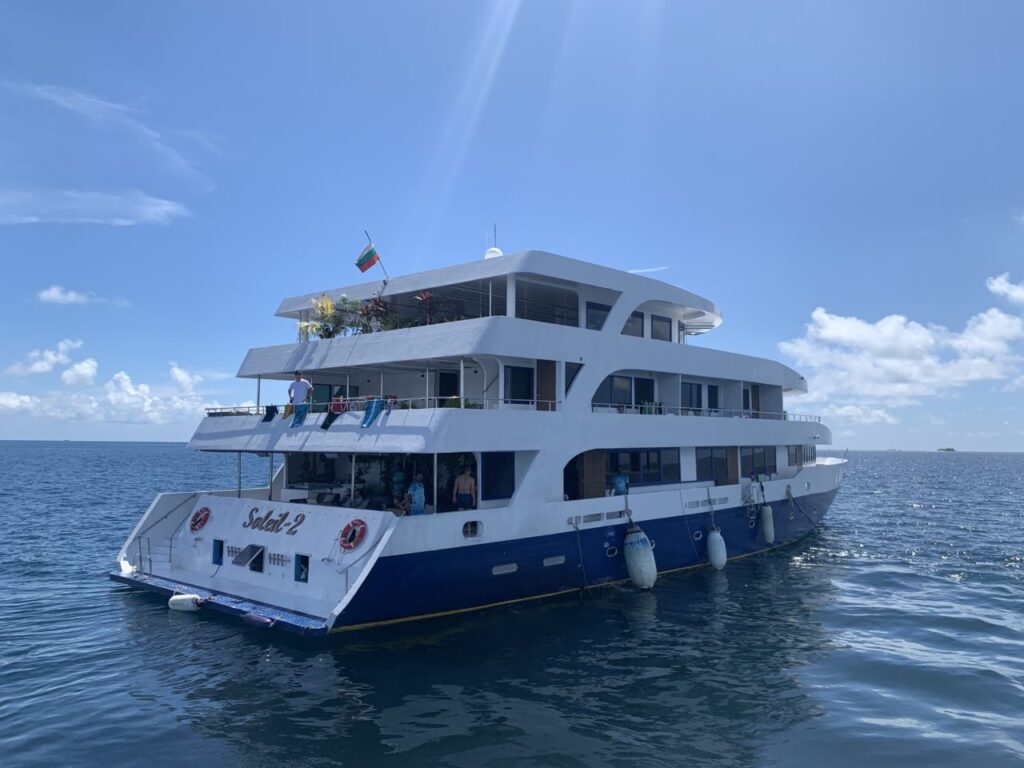
This is where you spend one to two weeks living aboard a boat specially designed for divers.
You’ll dive 3 to 4 times a day and there are often extra activities such as watersports, island visits and beach bbq’s.
Maldives liveaboards vary a lot in terms of price, diving itinerary, overall layout – e.g. simple cabins vs luxury ones with private balconies.
In my opinion, a liveaboards is the absolute best way to explore the Maldives because it’s less expensive than diving the same amount at a resort and takes you to the very best dive sites of the Maldives, many of which can only be reached via liveaboard due to being too far from the resorts.
Find out more about the experience of being on a Maldives liveaboard and read reviews of the best options for 2024 on our main page: Best Maldives Liveaboards!
Resort:
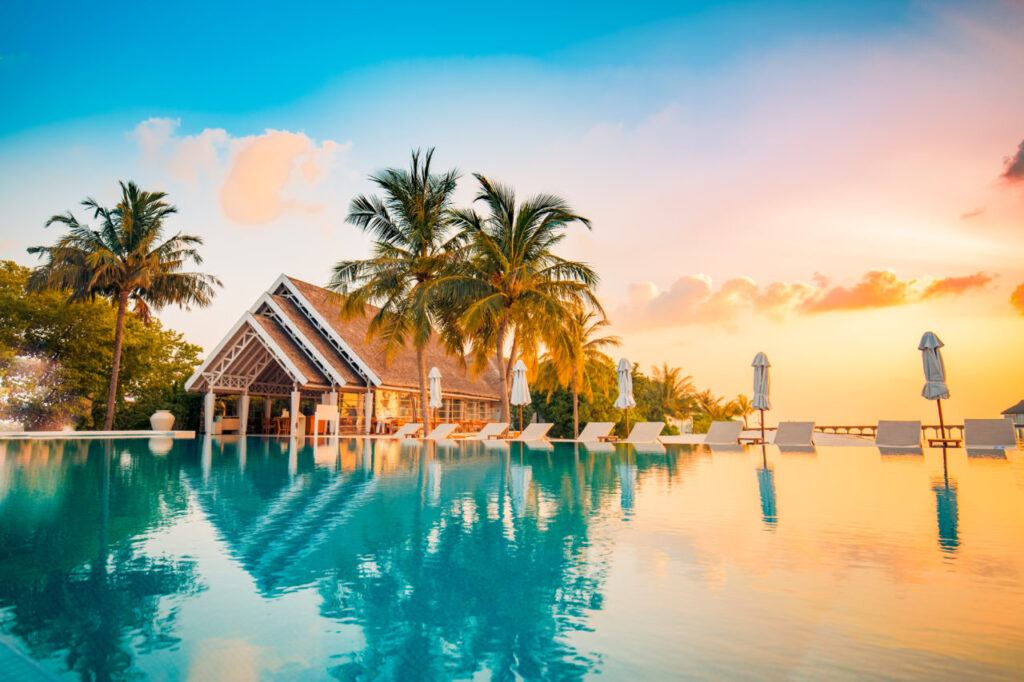
Dive Resorts in the Maldives tend to be extremely luxurious but are often very expensive.
The most luxurious options are usually on private islands and feature secluded white sand beaches, spas, gyms and work stations.
When staying at a resort, you can take things at a more leisurely pace, e.g. diving less and relaxing more!
Usually, there’s more activities and facilities you can use like gyms and yoga studios.
However, if diving is your number one priority, we strongly recommend going with a Maldives liveabaord as they offer better value for money and take you to the best dive sites.
Maldives Scuba Diving Prices:
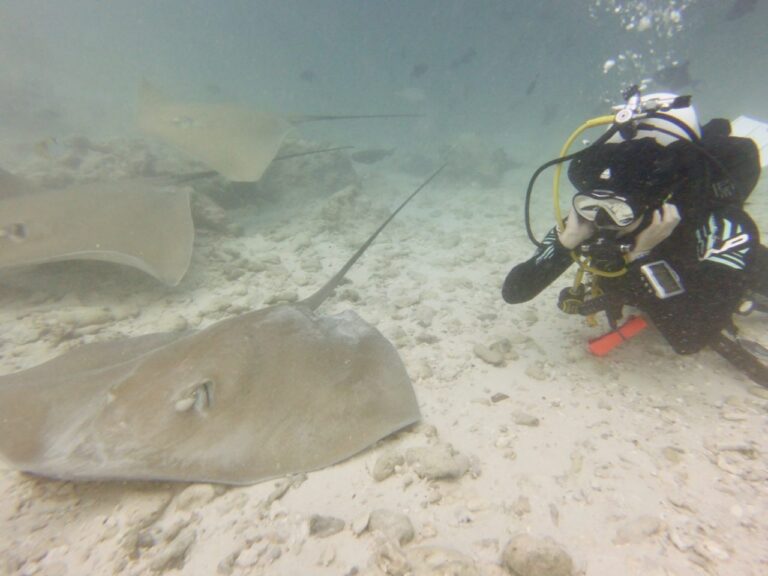
There’s no denying it – diving in the Maldive’s ain’t cheap! If you’re looking to scuba dive somewhere more affordable, you’d be much better off checking out destinations such as Thailand, the Red Sea or the Philippines.
However, if you (understandably) have your heart set on the Maldives, it’s useful to know the average diving price. Due to fluctuating economies and currency values; it’s impossible to give a 100% accurate prediction, but here’s a rough guide:
- Generally, the average price of a fun dive in the Maldives is $70 – $85 (USD) / RS 5300 – RS 6400 (Maldivian Rufiyaa), which includes the boat trip, air tank and weights. Discount options are sometimes available if you bulk buy dives.
- Most Maldivian resorts are expensive and can cost $1,500 – $10,000 for just one week. A few are cheaper and can be stayed at for around $300 a week – but you have to pay for your dives and food separately. Even if you stayed at one of those cheap ($300ish a week) resorts for a week and only dived once a day, it’d still cost you more than the cheapest Maldives liveaboard and you wouldn’t have dived nearly as much.
- Maldives liveaboards vary in price considerably. The advantage of going on one is that the cost includes daily dives (3+), food, accommodation and transport between dive sites and regions – so they offer much better value for money. Roughly, a week on a cheap Maldives liveaboard will cost between $1,200 – $2000. A week on a mid-priced Maldives liveaboard will be about $2000 – $2500. A week on a luxury Maldives liveaboard can cost somewhere between $3000 – $4,500. Two of the all-time cheapest and best-value-for-money Maldives liveabaords are Soleil 2 and Iruvai.
How to Get to the Maldives
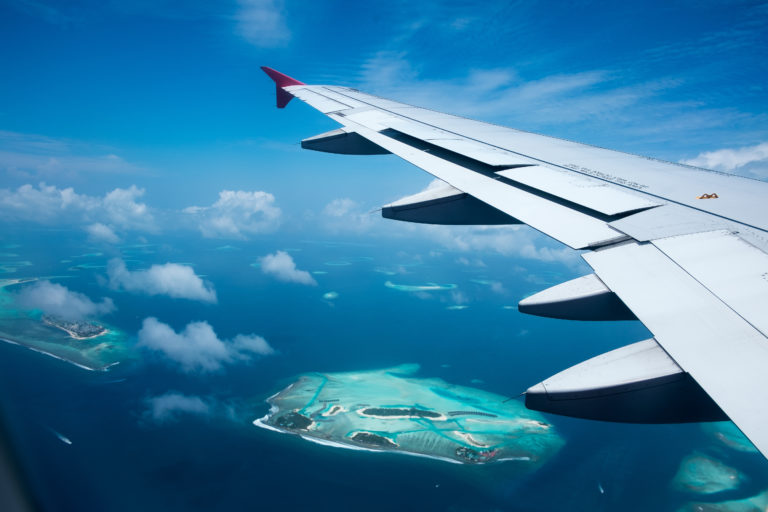
The Maldives is located within the Indian ocean, some 370 miles from the southwest coast of India.
The countries main international airport (Velana) is situated within Male atoll on Hulhule’ island. Once you arrive there, you’ll usually be met by a staff member of your liveaboard or resort who will guide you to where you’re going.
If it’s located on another atoll, you’ll reach it via a ferry speedboat, a small domestic plane or some combination of the three, depending on where you are going. Don’t worry – your resort or liveaboard will help arrange all of this for you.
(If you’re looking at making a one way trip to the Maldives, then check out this guide on Maldives living).
Maldives FAQ
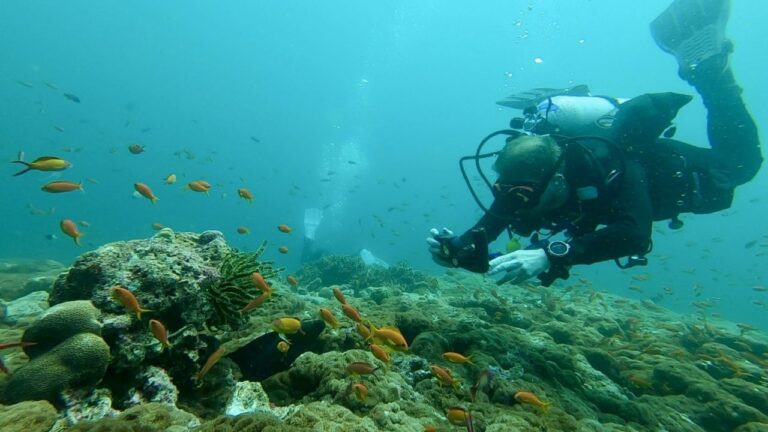
Where is the Maldives?
The Maldives is located some 370 miles from the southwest coast of India. It is surrounded on all sides by the Indian ocean.
When is the Best Time to make a Trip to the Maldives?
You can dive the Maldives all year round! High Season (January – May) offers the best water visibility, calmest seas and clearest skies. Low Season (June – November) presents cloudy skies, more choppy seas and rainfall. However, higher plankton concentrations in the water means even more manta rays and whale sharks, plus there are fewer other tourists! Check out our section on the Maldives Diving Seasonfor more info.
How Expensive is Diving in the Maldives?
The Maldives is one of the worlds’ more expensive diving destinations. Refer to our Maldives Diving Prices section for details!
What Else is there to do in the Maldives?
The Maldives is a tiny island nation. Male – the capital and most densely populated area of the Maldives is just 6.2 km squared in size! Therefore, there is not a lot to do in the way of trekking or terrestrial activities, besides a few short, local culture tours on some of the islands and lazing around on the beach.
Many of the resorts do run yoga classes, have gyms and spas etc.
The main reason that people go to the Maldives is to scuba dive. There is a pretty big surfing scene at the Maldives as well as the chance to get involved in other water sports such as water skiing and kayaking. These can be arranged at some resorts as well as on some liveaboard trips.
What to Expect when Scuba Diving in the Maldives?
The main attraction of diving in the Maldives is lots of big pelagic life. It is considered by many divers to be one of the best places in the world to see manta rays and world sharks.
There are also many other species of shark including grey reef, whitetip reef, blacktip reef, hammerhead, thresher, nurse, tiger, bull, leopard and silky sharks!
Other large pelagic species include dolphins (lot’s of them!), mola mola, dogtooth tuna, giant trevally, sailfish and barracuda.
A lot of Maldives diving is defined by fast paced drift diving where scuba divers can witness sharks and other large pelagic species feeding on huge schools of fish. This means it’s best suited to advanced divers (advanced open water cert and 30+ logged dives).
There are also some dive sites within sheltered lagoons which offer healthy coral reefs with many turtles and reef fish. These are more suitable for beginners, but you probably won’t see the large marine life here.
The underwater landscapes of the Maldives are highly varied and largely consist of thilas, pinnacles, swim throughs, sloping coral reefs, caves and mighty drop offs in addition to big open expanses of water. There is a some wreck diving in the Maldives but not much.
Can Beginners Dive at the Maldives?
Generally speaking, the Maldives is best suited to experienced divers due to the many strong currents and significant depths at most Maldives dive sites.
Most Maldives liveaboards require guests to have their advanced open water certification and at least 30 or more logged dives.
However, a few Maldives liveaboards – Emperor Serenity and Emperor Virgo allow guests who only have their open water certification and no extra logged dives. It is also possible to hire a private dive guide and even complete diving courses with these more beginner friendly Maldives liveaboards.
When is the Best Time to see Manta Rays in the Maldives?
Manta Rays and Whale Sharks can be seen in the Maldives all year round!
However, between the months of May – November, planktonic booms mean that there are even more whale sharks and manta rays in the area than usual, especially around the eastern edges of atolls.
That said, more mantas and whale sharks may be found around the western edges of atolls between January – April.
Where are the Best Dive Sites in the Maldives?
The Maldives can be divided into five distinct regions – far north, north, central, south and deep south. All of these regions offer spectacular diving with many drift dives and opportunities for witnessing manta rays, whale sharks and lots of shark action.
However, some regions are better than others for seeing a wider variety of large marine life, exploring off the beaten track dive sites or unique underwater features such as huge caves or wrecks.
Which region offers the best dive sites really comes down to personal choice – however it’s probably safe to say that the central, south and deep south regions are the most popular!
- The Central Region is the easiest to reach and has the biggest selection of resorts and liveaboards that operate there. It is also one of the best places to see a whale shark and hammerhead sharks. There’s also many manta cleaning stations. This is the most famous and popular region of the Maldives – we recommend starting here.
- The South Region has some of the best drift diving in the country, with many reef sharks and other large fish feeding on large schools of smaller fish. This is perhaps the most popular off-the-beaten-track Maldives region.
- The Deep South is known for having more species of shark than anywhere else in the Maldives as well as oceanic black manta rays, mola mola and the Maldives biggest shipwreck. The Deep South sits close to the equator and so it is pretty much dry season there all year round. In terms of big marine life variety, this is the best place in the Maldives to go!
- The North Region has an exciting and varied underwater landscape of walls, swim throughs, canyons and thilas with many manta cleaning stations. There’s also a decent number of beginner friendly dive sites in sheltered atoll lagoons.
- The Far North Region is the least explored part of the Maldives and the most off the beaten track. It’s known for its dramatic underwater landscape of huge caves, towering pinnacles and awesome wall dives. There’s also a few shipwrecks.
What is the Maldives Diving Water Temperature?
Water temperatures in the Maldives are fairly consistent throughout the year at around 80ºF-86ºF / 26ºC-30ºC. This means it’s extremely warm – most divers go in a 3mm wetsuit – although a few who really feel the cold may take a 5mm!

Maldives Diving Terminology
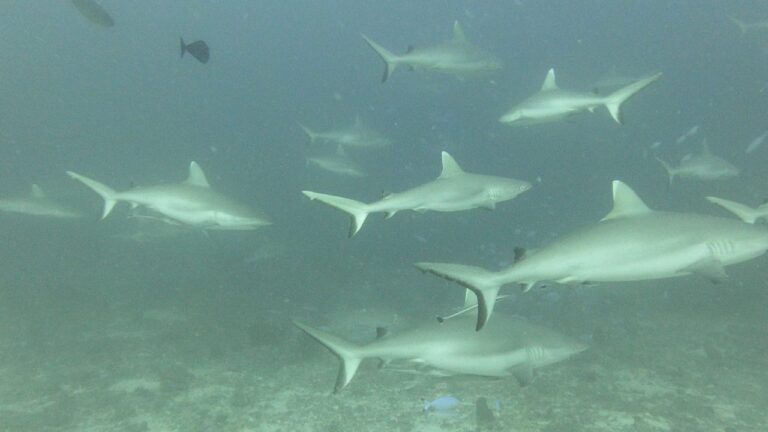
Atoll
A ring shaped coral reef, including a coral ring that encircles a lagoon either partially or completely. There may be coral islands or cays on the rim.
The average atoll was originally formed from an oceanic volcano. A coral reef grew around the shore of that volcano and then over several million years, the volcano went extinct and eroded and subsided completely beneath the surface of the ocean.
The reef and the small coral islets on top of it are all that remains of the original island and the lagoon has taken the place of what was once the volcano.
It’s important to note that when referring to the major Maldivian atolls, some atoll names apply to administrative regions that sometimes consist of not one but several atolls. For example, “male atoll” is the name given to an administrative region within the Maldives that is comprised of a group of atoll structures.
Also, even within a single natural atoll structure, there can be many separate islands where the sea runs through parts of the coral ring, splitting it up into separate islands (but viewed from above they are are still in a ring formation). From an aerial view, one can see these island chains much more clearly.
In this article, we’ve described all the major atolls that comprise the Maldives regions; however don’t be surprised if you here names of other atolls being thrown about sometimes. Generally speaking though, other Maldivian atolls are either part of the major atolls we described in the regions descriptions, or they are not relevant to scuba divers.
Thila
An underwater island or mountain with a top reef between 5 and 15 meters. Thilas that are within Kandus are usually those with the strongest currents and the most diverse marine life.
Giri
A giri is like a thila except that it comes in very shallow to the surface. Often, the top reef is just 2 meters below the surface and sometimes even emerges out of the water during low tide. Giris are mostly within the atolls and so are less exposed to currents compared to thilas.
Kandu
Channels between the islands, reefs or atolls. These are the places where when the tide changes, the water flows in and out of the atoll. They are the best places to do drift dives and for seeing large marine life.
Channel
A wide strait or waterway between two land masses that lie close together. A channel can also be the deepest part of a waterway or a narrow body of water that connects two large bodies of water. Channels are also the locations of some of the strongest currents and best drift diving within the Maldives.
Lagoon
Each Maldivian island has it’s own lagoon. They are usually around twenty meters deep and mostly sandy. Because these lagoons are protected from the current, they’re an ideal spot to conduct diving classes or for beginners to dive in ease. But there’s usually not much to see there!
Pelagic Species
Species that live within the pelagic zone of the ocean, unlike reef species. The pelagic zone consists of the ocean’s immense, open body of water and can be divided into further regions according to depth.
Although pelagic marine animals can include small fish species, when scuba divers refer to pelagics they are generally describing the large predatory fish such as pelagic sharks and tuna, which can be observed hunting large schools of fish on open water drift dives.
Whale sharks and manta rays are also pelagic species, although they are filter feeders, hoovering up vast clouds of tiny plankton!
Pelagic species are extremely prevalent in the Maldives – they are the main drawing factor for scuba divers!
Wall Dive
Wall diving involves diving alongside the edges of coral reefs or reef walls and other vertical underwater terrains. A reef wall can vary in size immensely – from just a few meters on a small part of a reef to epic walls that drop dramatically down for hundreds of meters or more!
A wall dive gives you the best of both worlds – colourful reef on one side and open waters that often see large marine life on the other.
Pinnacle
A tall and thin formation that generally stands alone and isolate in deep water. Think of it as like an underwater rocky tower, one that is usually covered in colourful, sessile marine life!
Overhang
A topographical feature that is open on one side, but obstructed overhead whilst also being deep enough that a diver can be under the overhang.
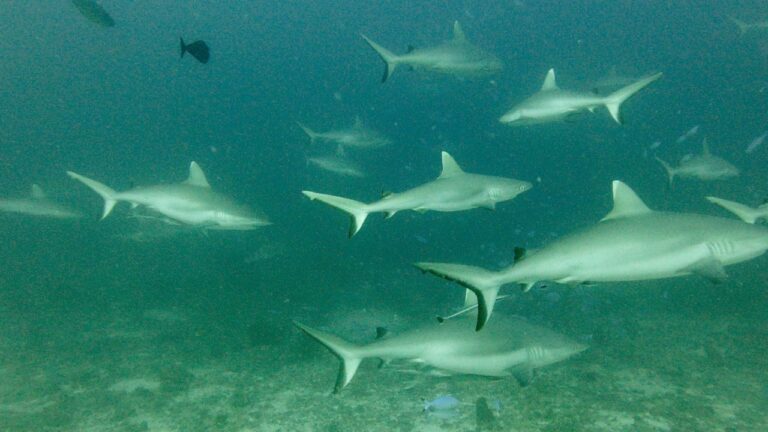
Maldives Diving Squad DEBRIEFING:
Diving Squad – at ease! Great job. You’ve completed our mission briefing for how to dive the Maldives and now you’re equipped with all the knowledge you need to actually go and experience this world-class dive destination for yourself!
We constantly update and improve our content and it comes from our own first-hand experiences of personally diving the Maldives. This means you can rest assured that what you’ve read today reflects the very latest and up-to-date info about diving the Maldives in 2024. Be sure to check back for future updates!
If you’re looking for more reading material, we strongly recommend checking out our page: Best Maldives Liveaboard Reviews.
Chow for now!
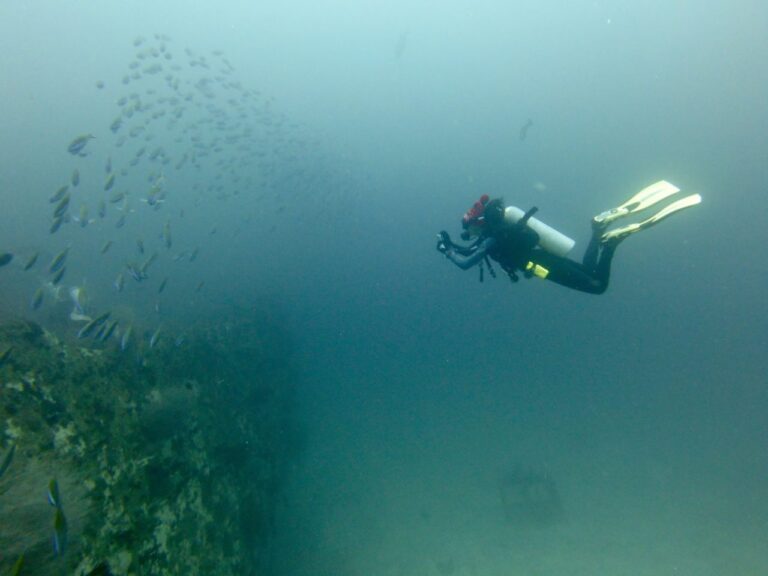
Support the Squad!
Some of the links in on this page contain affiliate links. Thats means that if you book a liveaboard or accommodation or purchase insurance or a product on amazon after clicking through one, we earn a small commission at no extra cost to you.
It’s what helps us keep this site ultra sexy and fresh and funds our missions to delve out into new corners of the world to create new content for you. Muchas gracias!